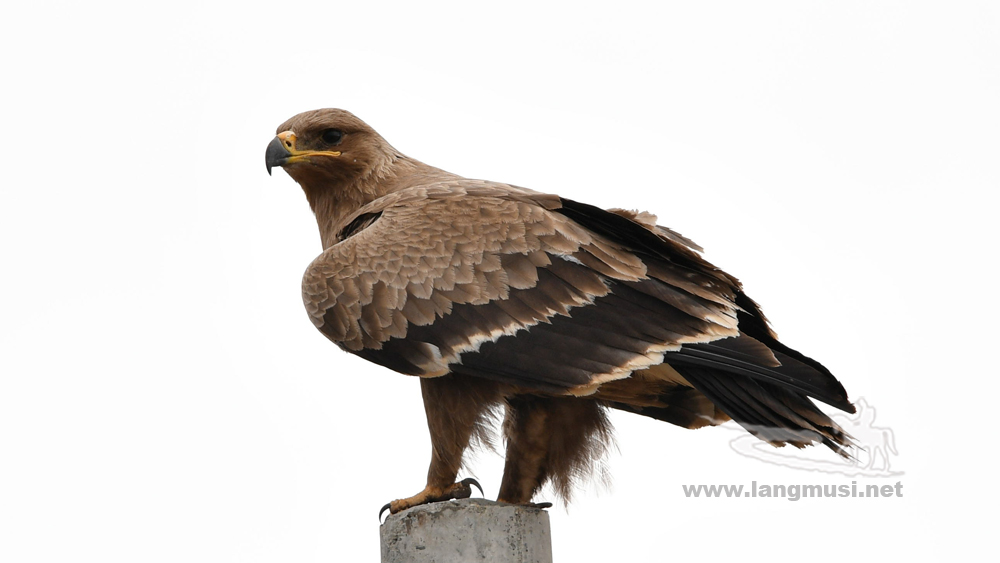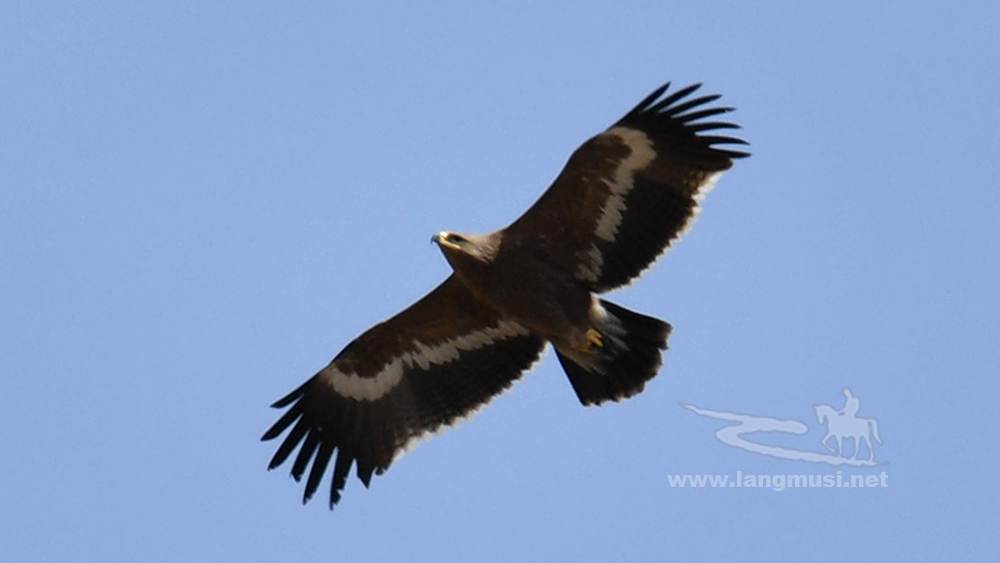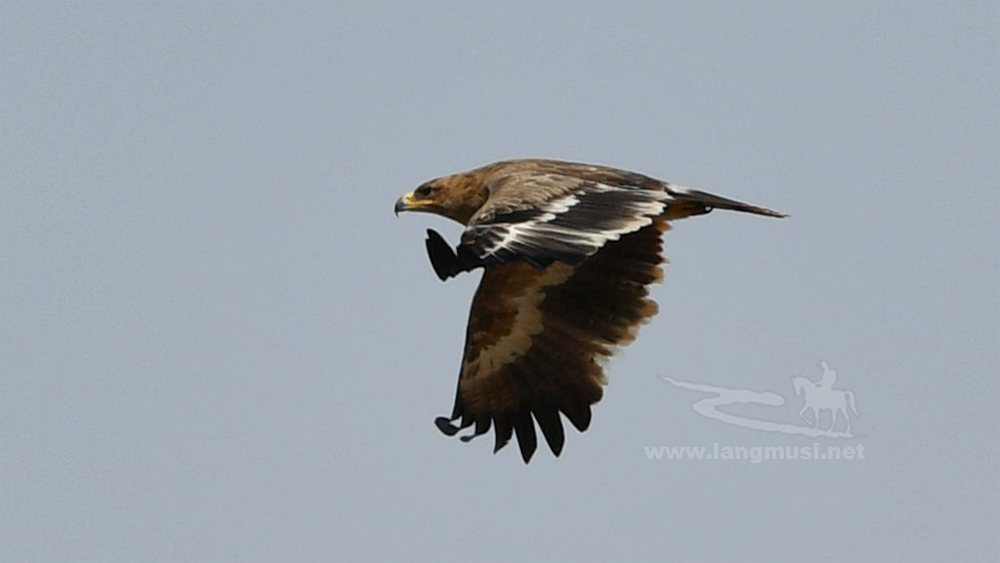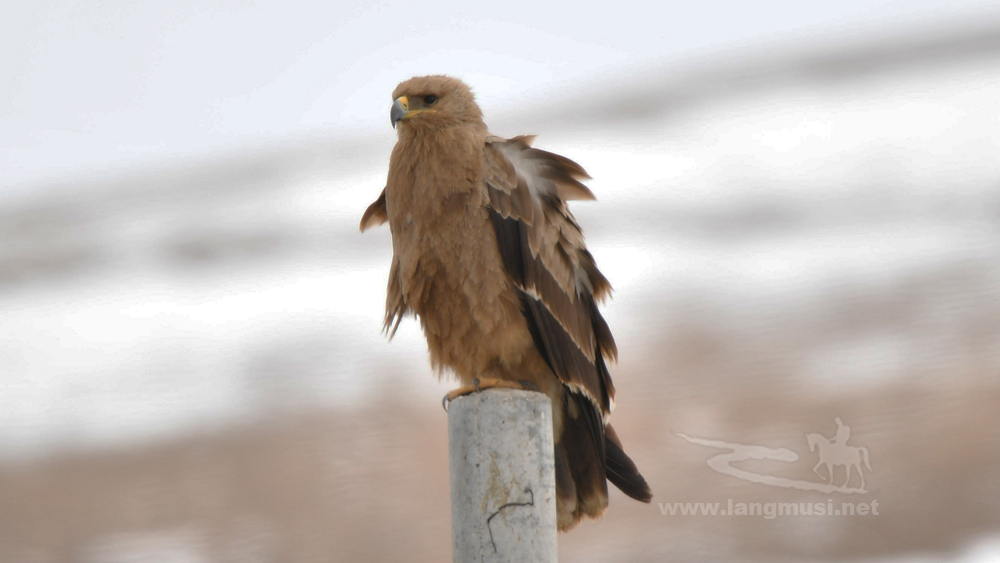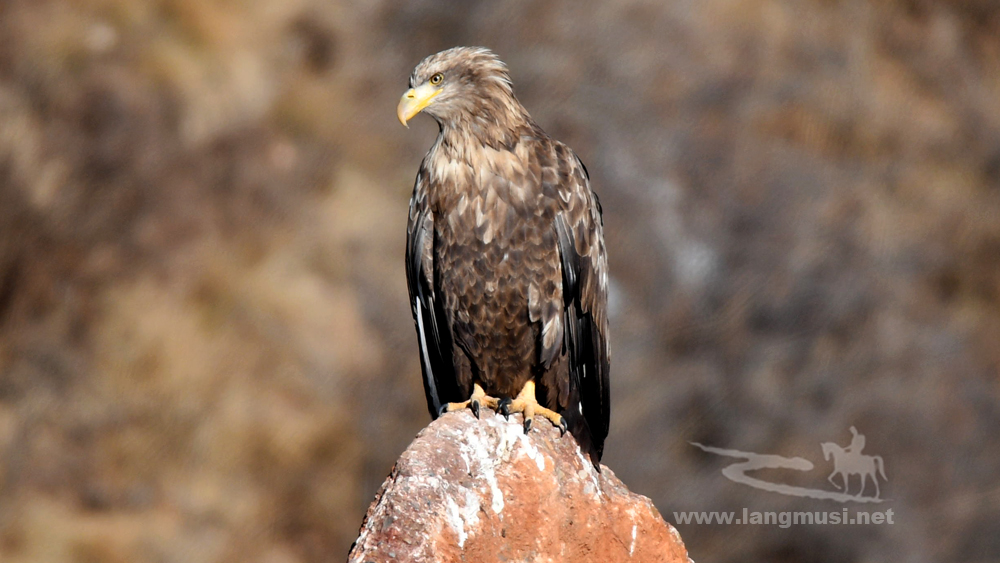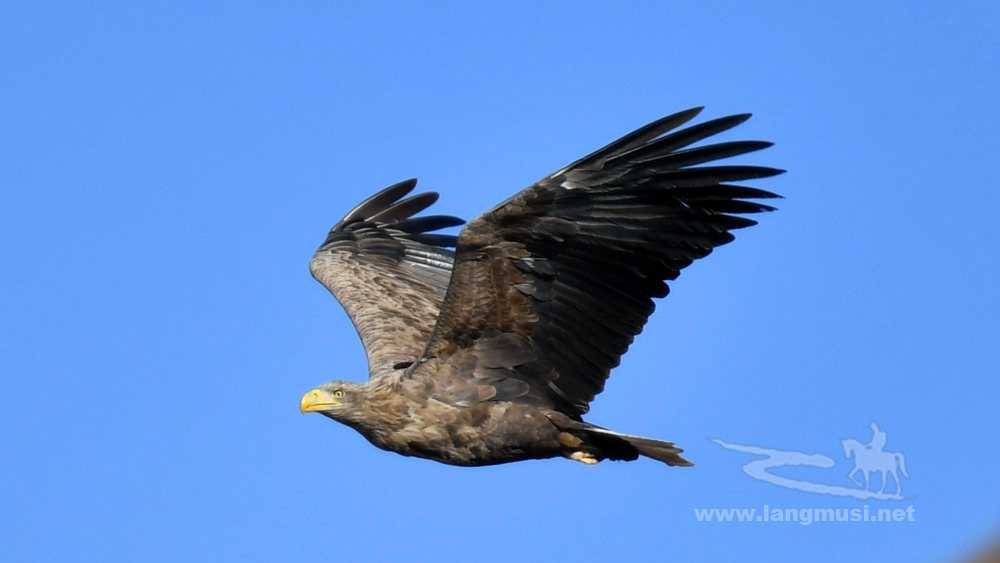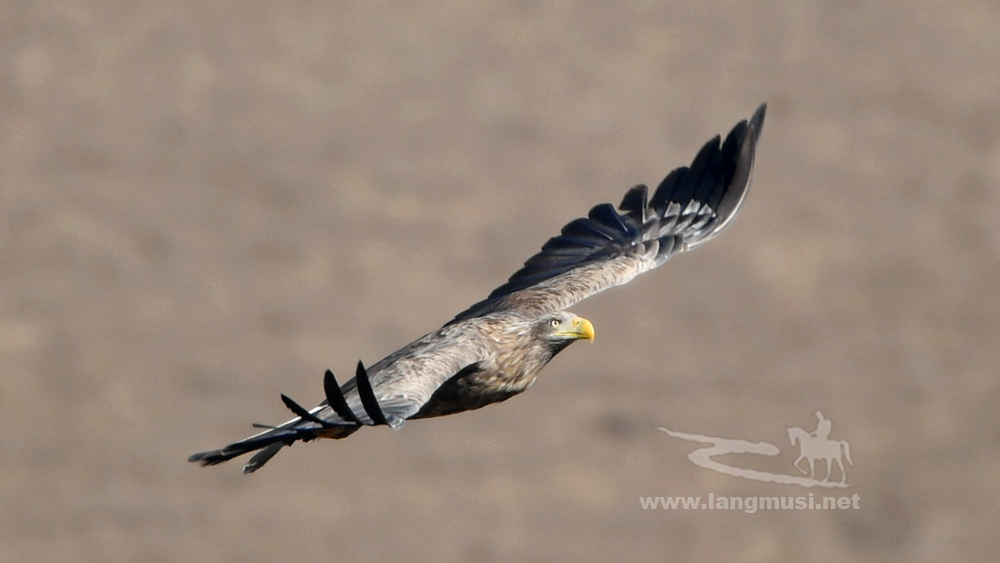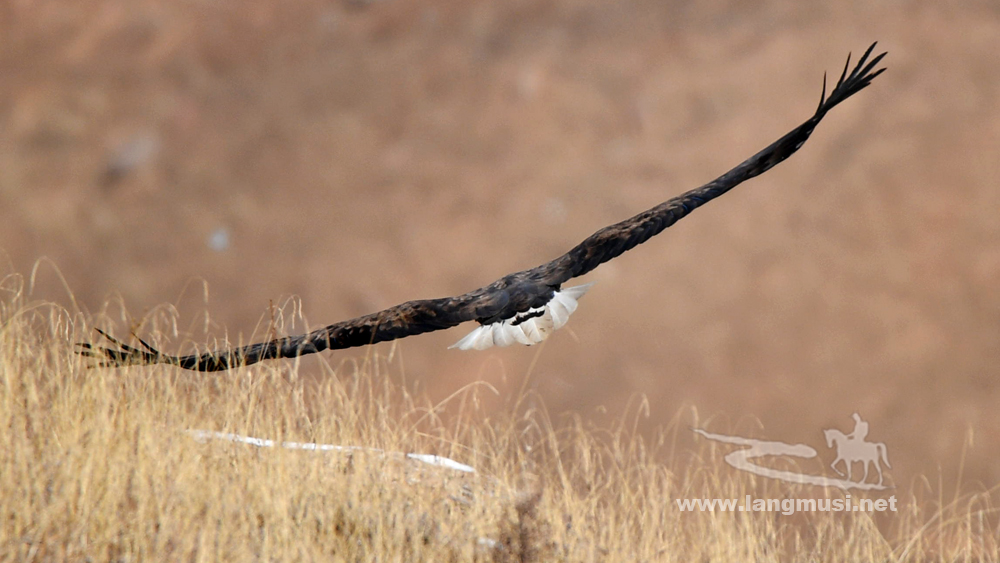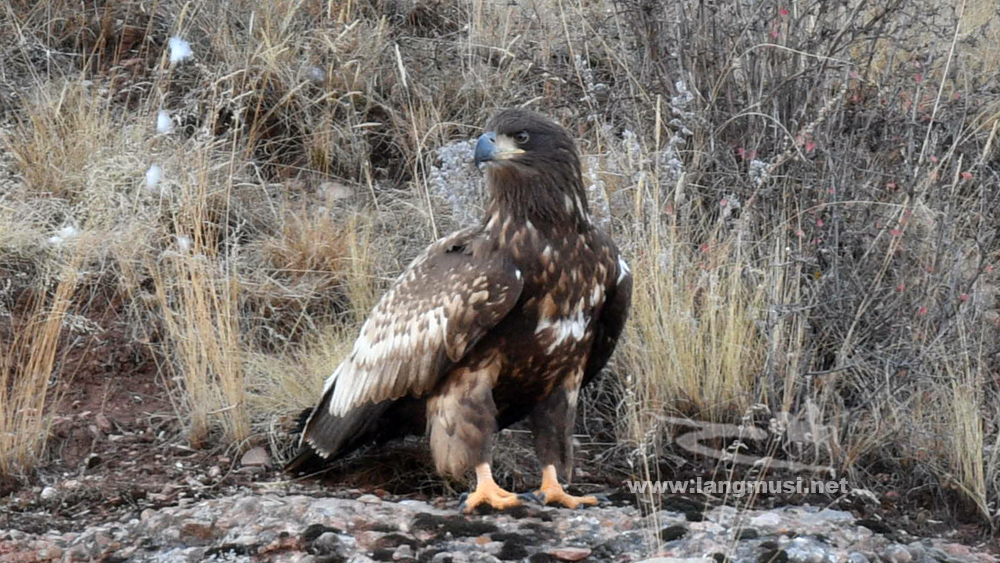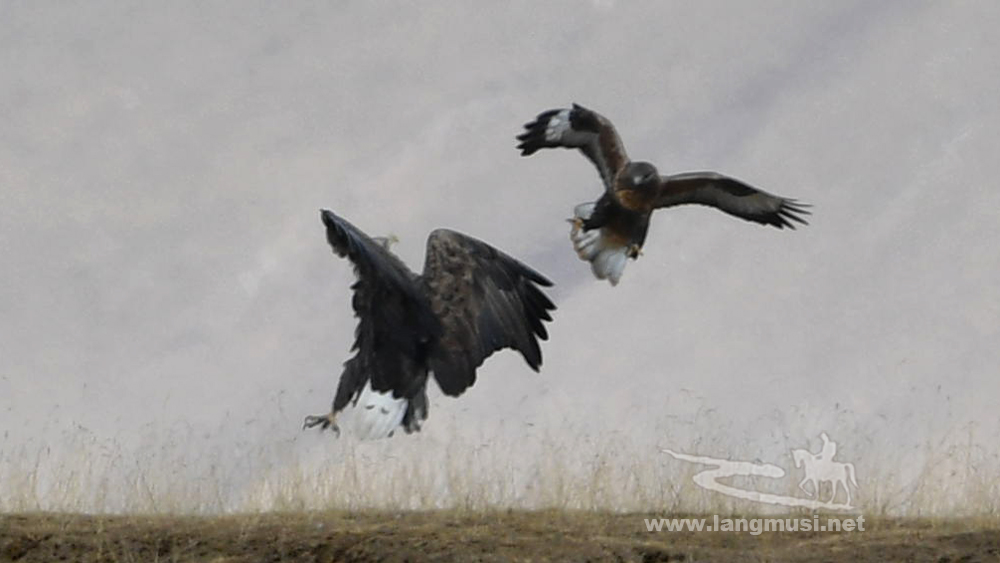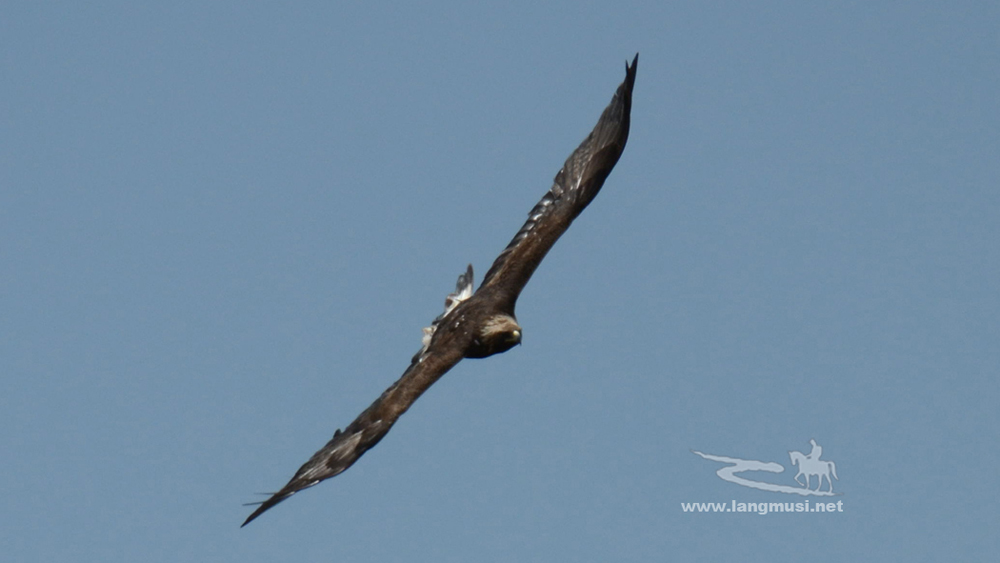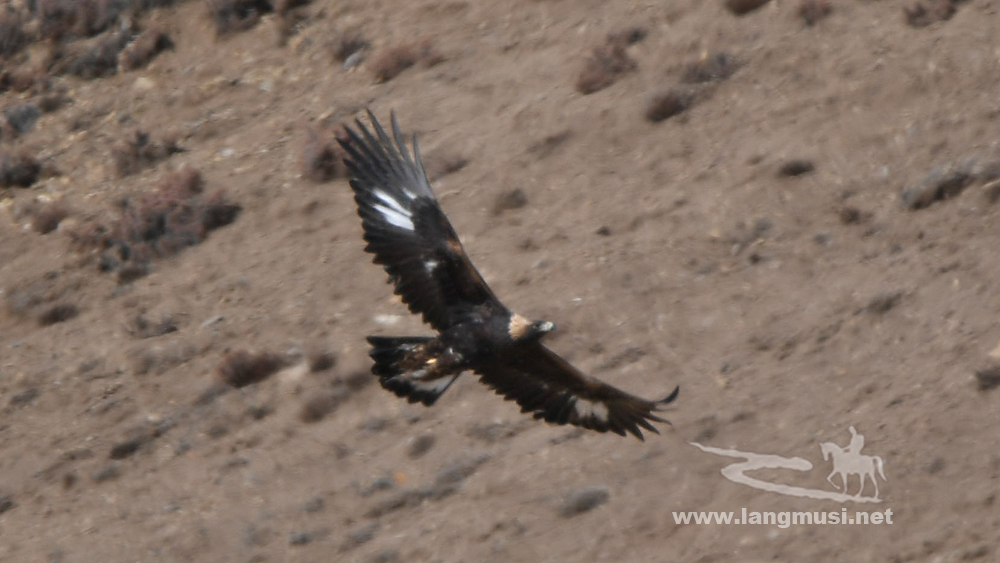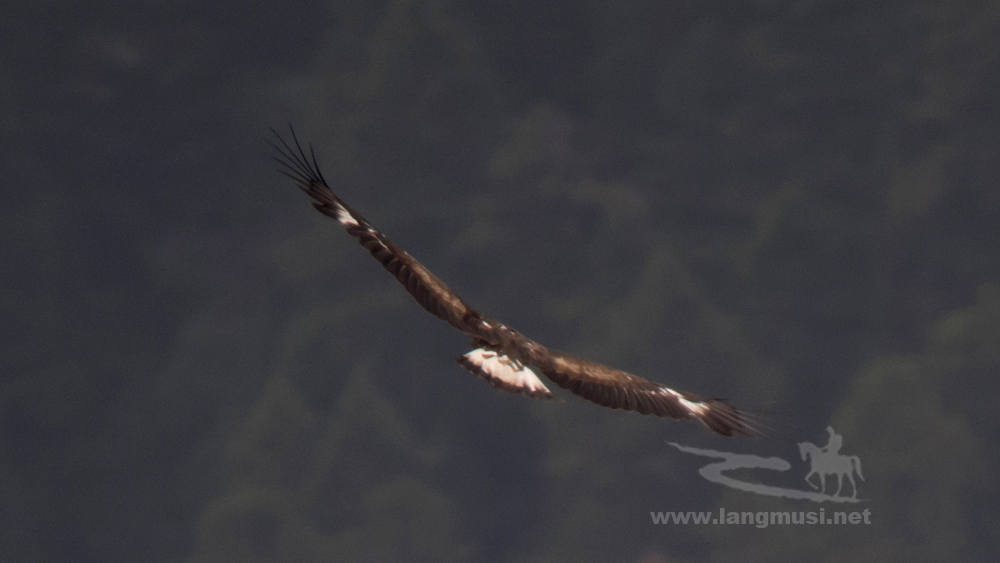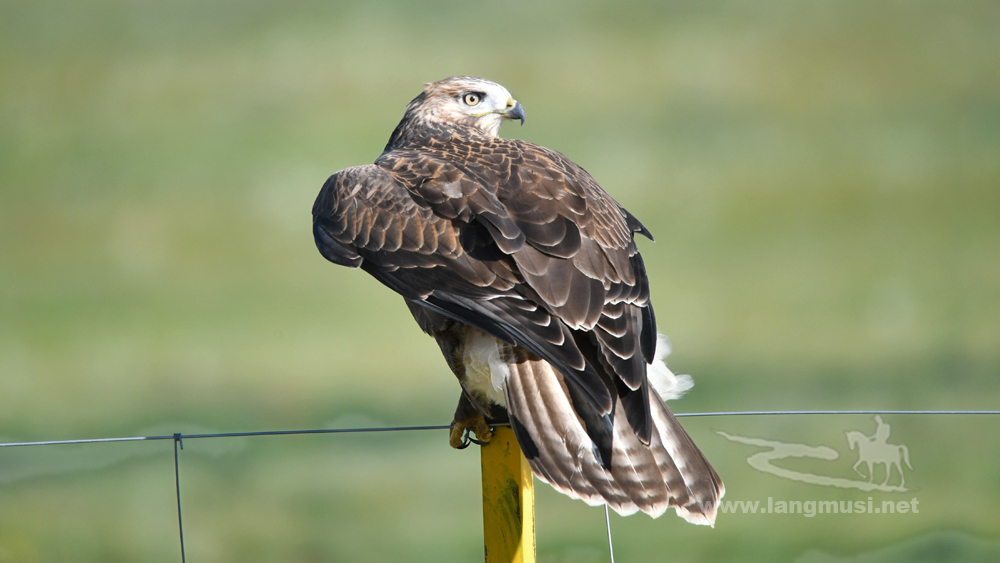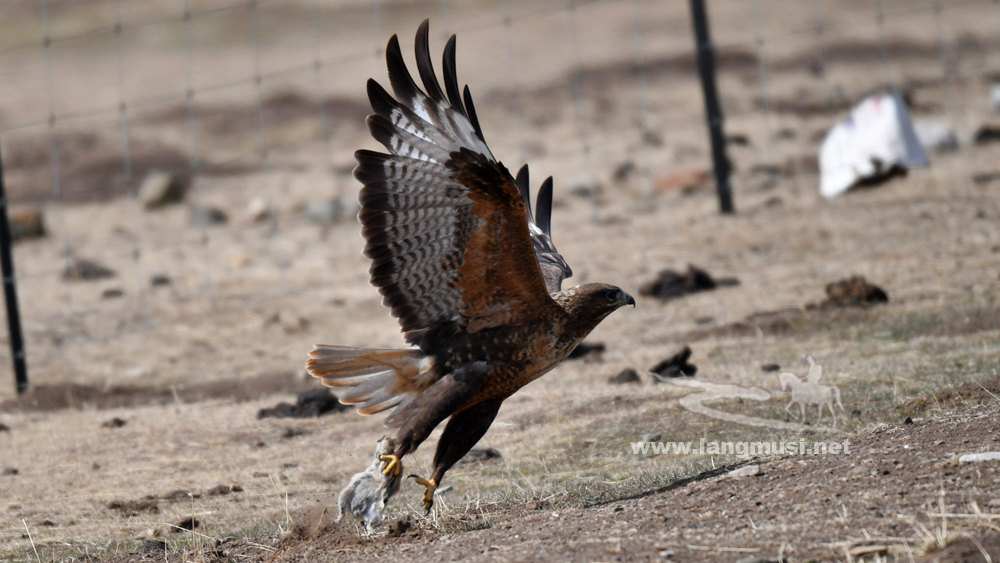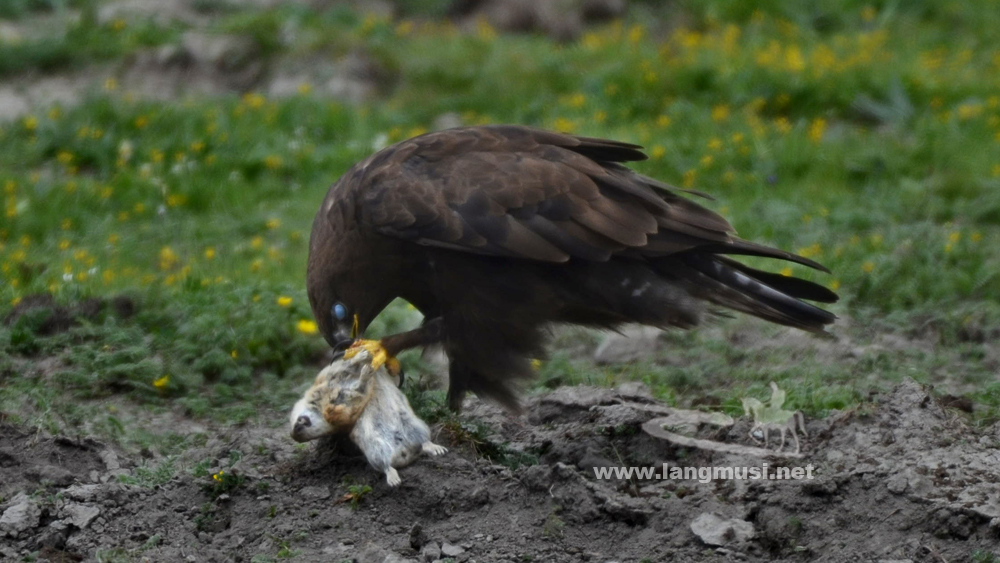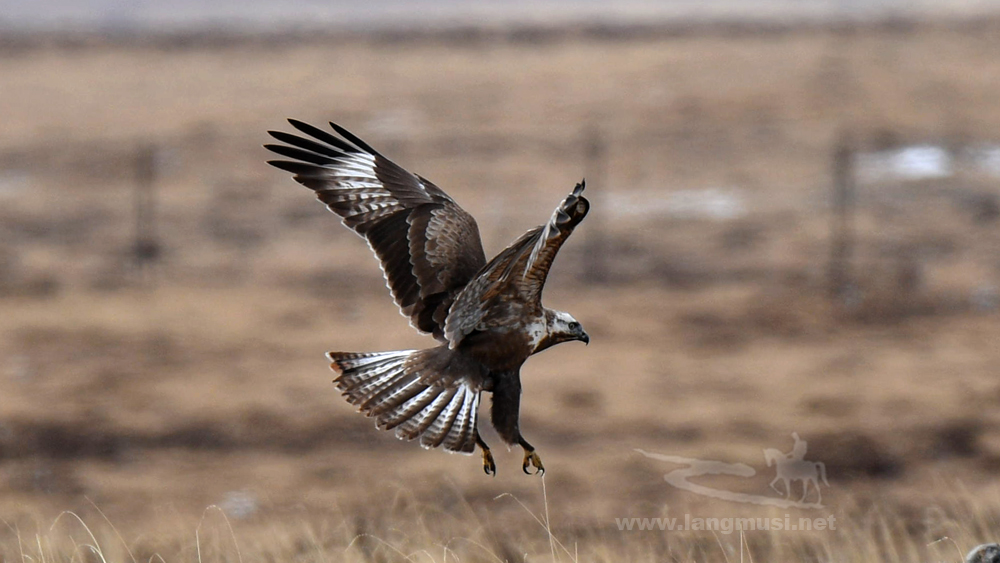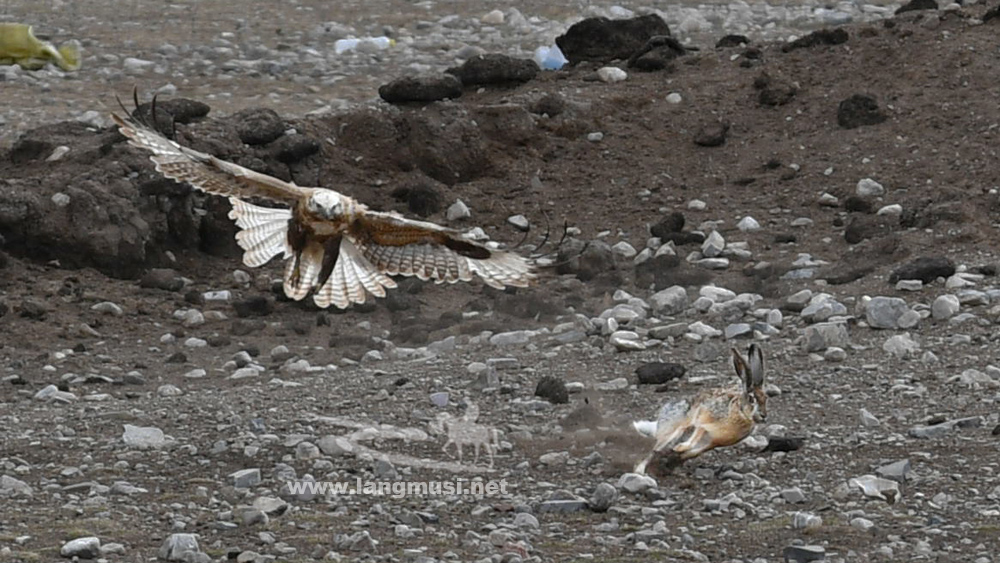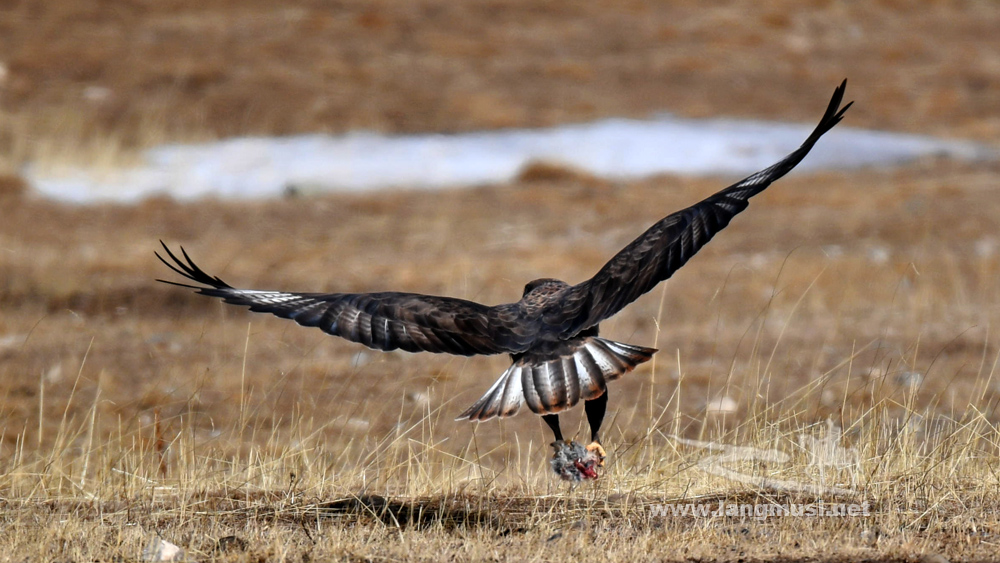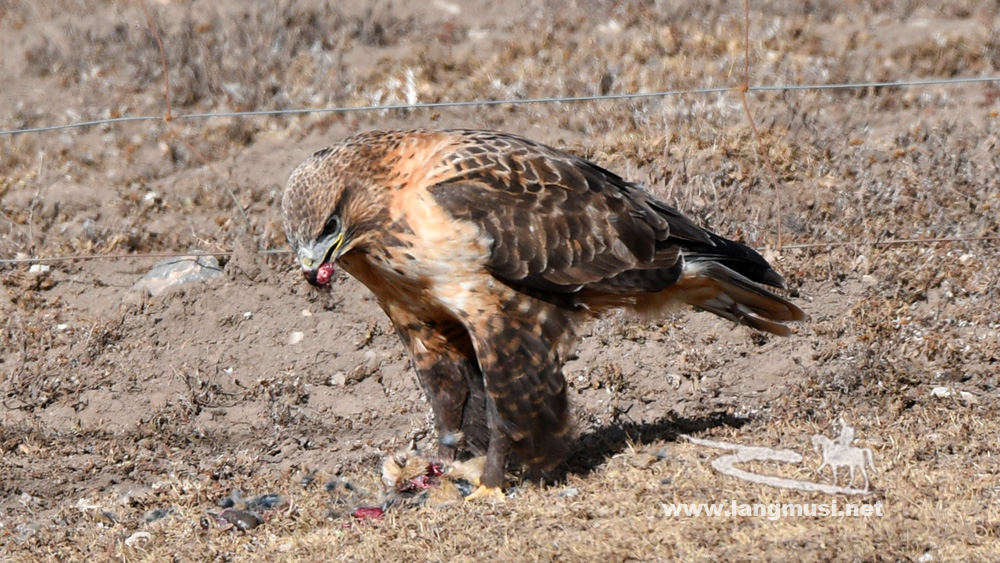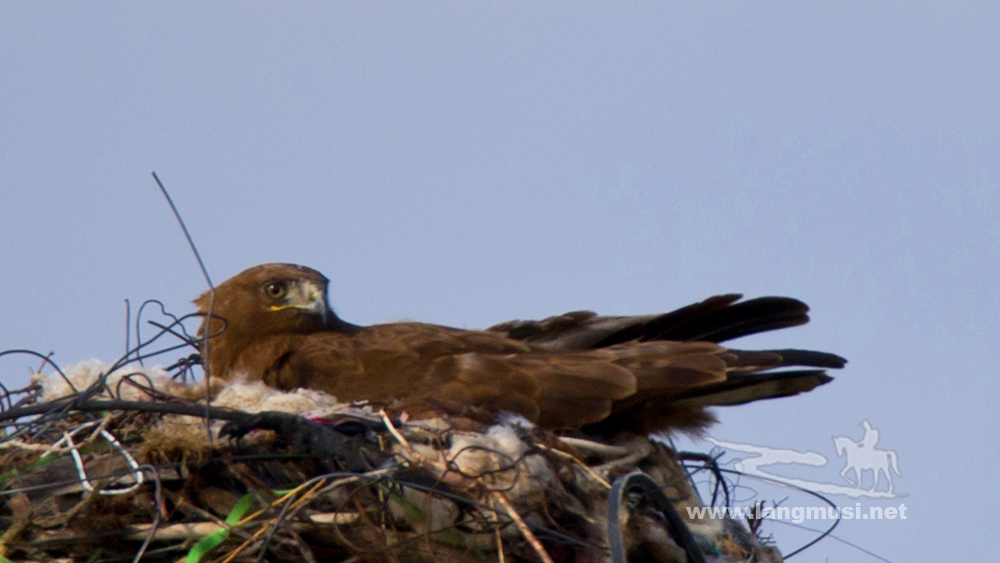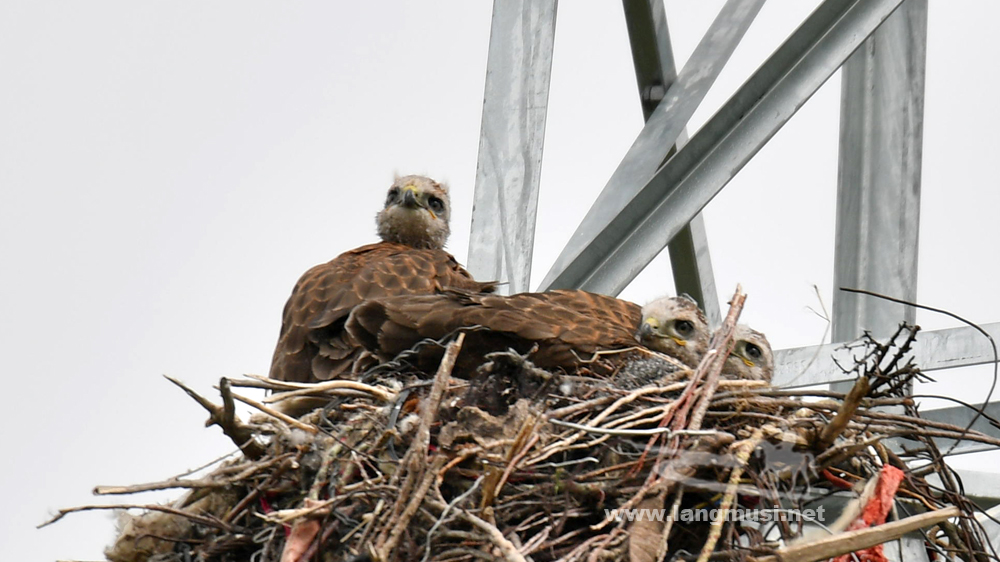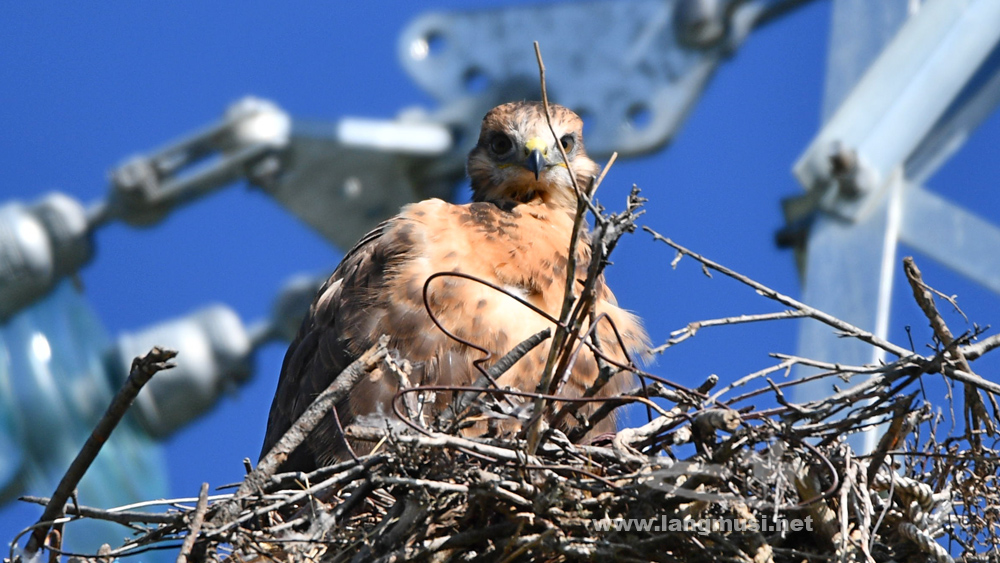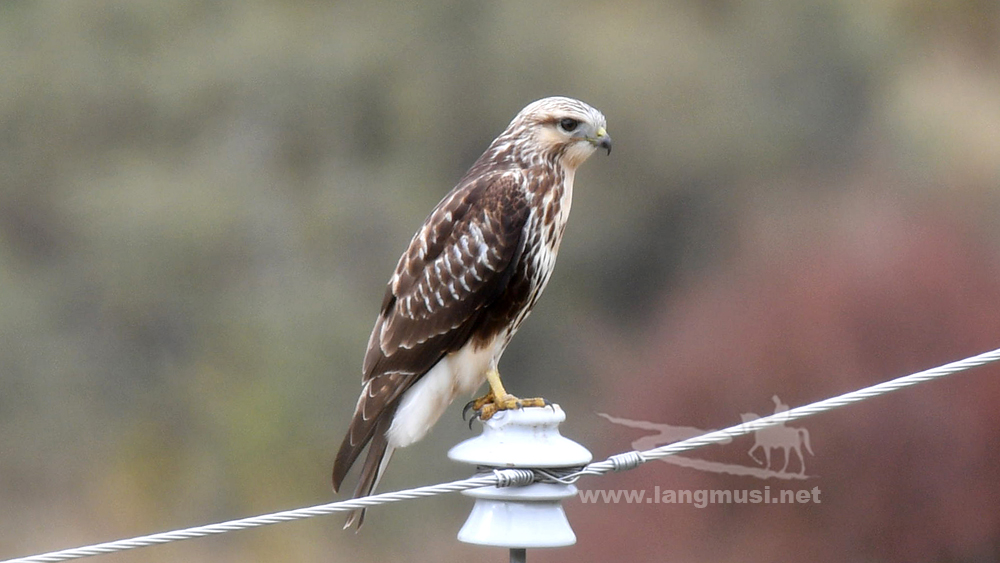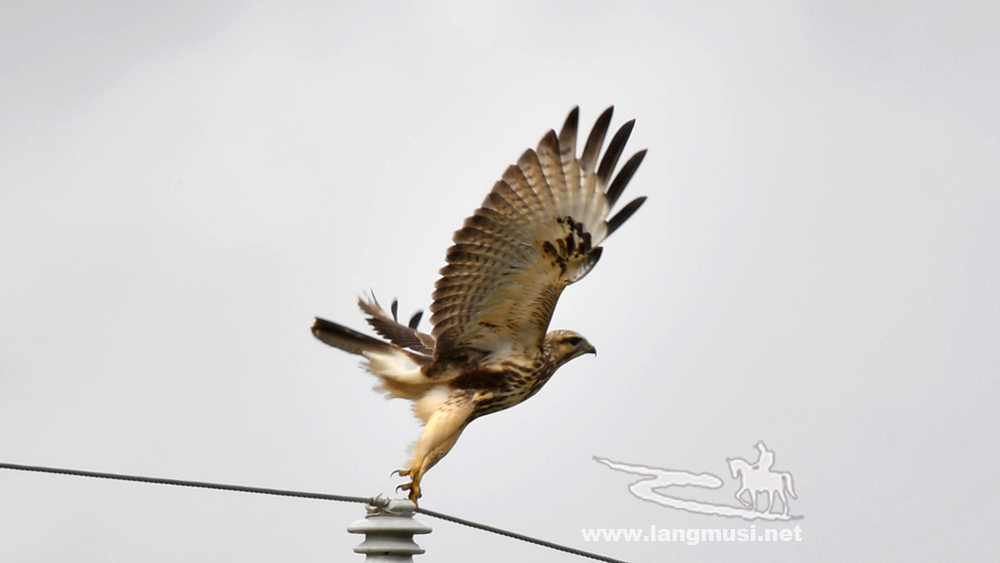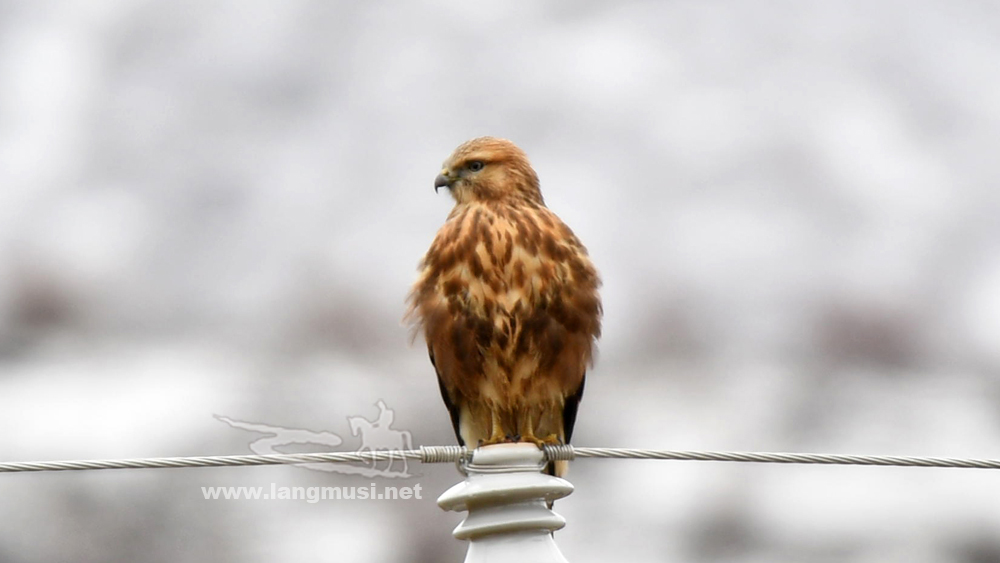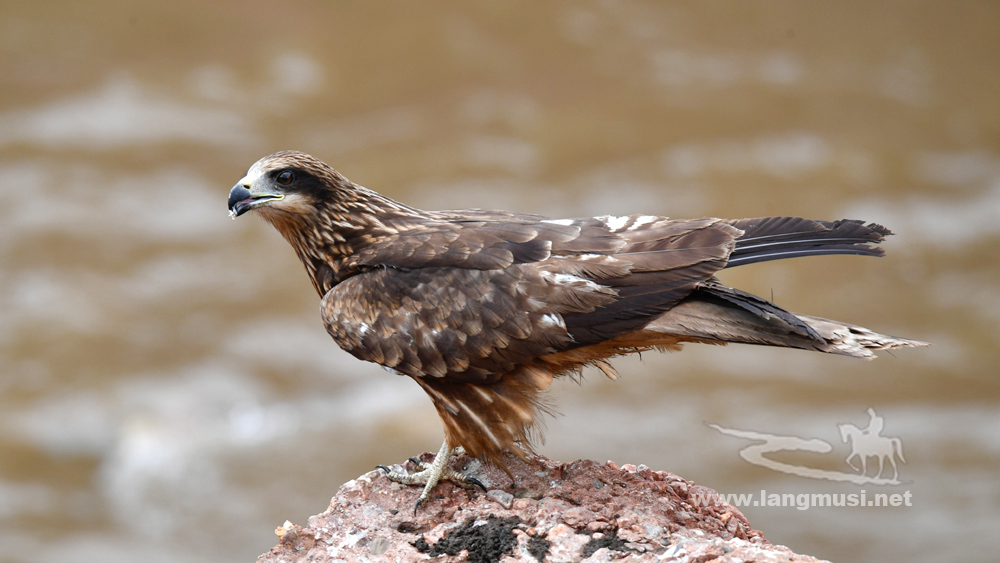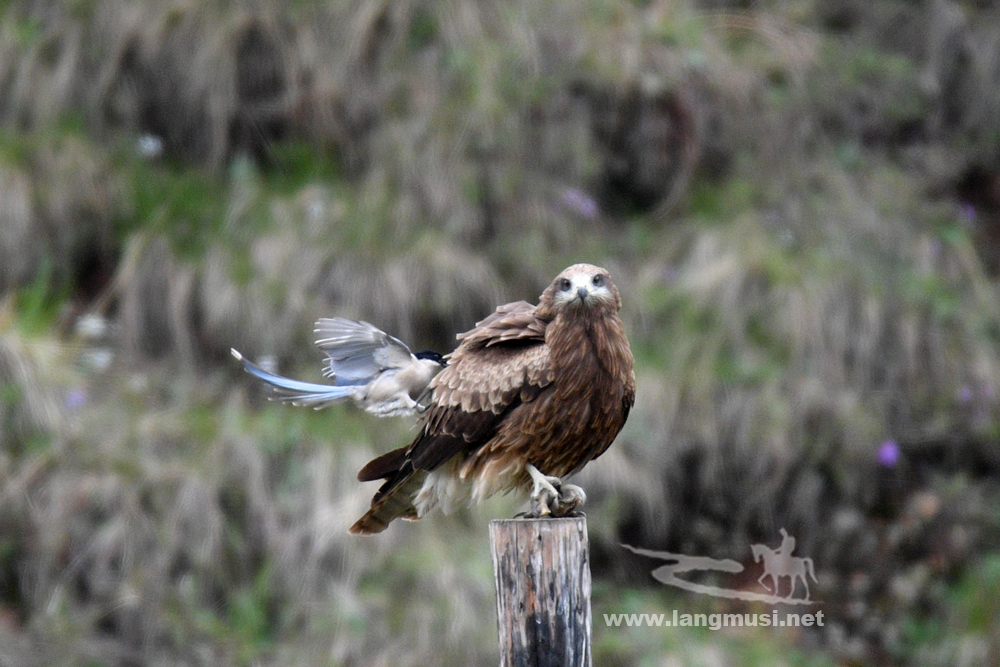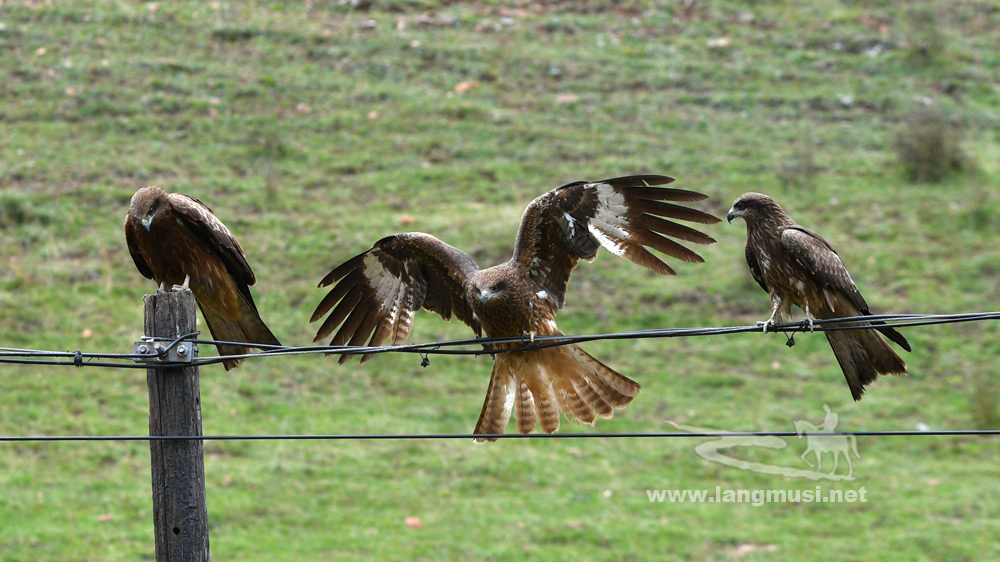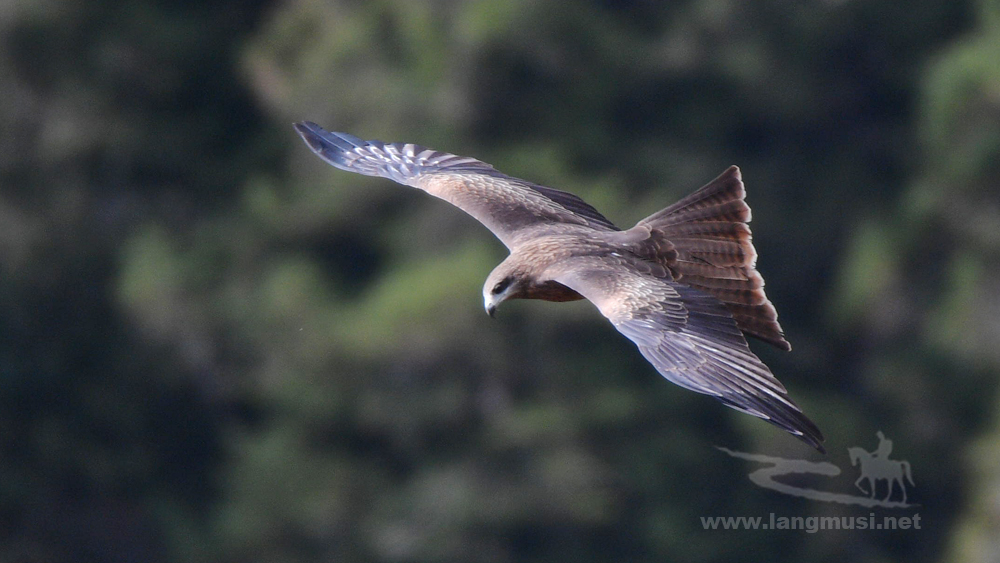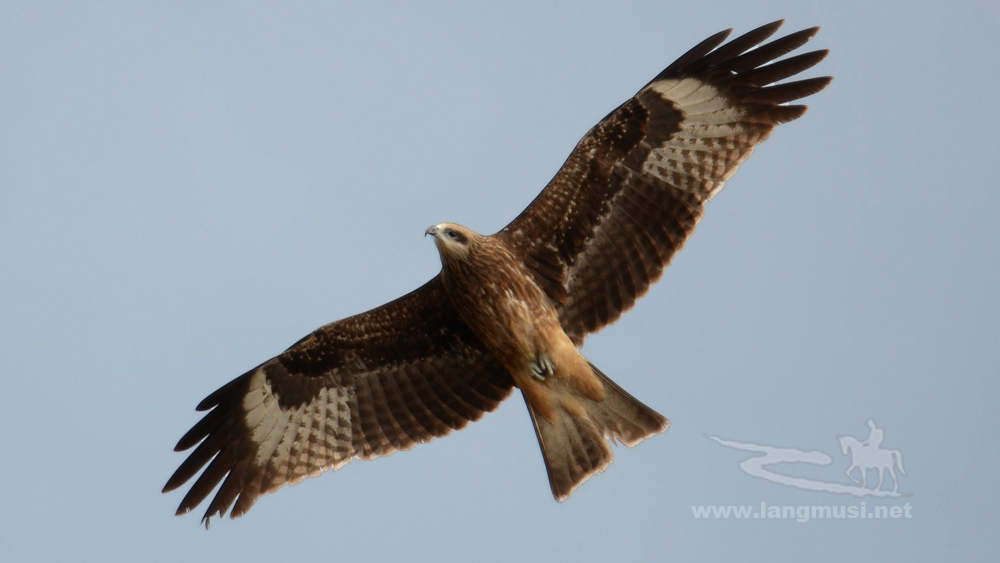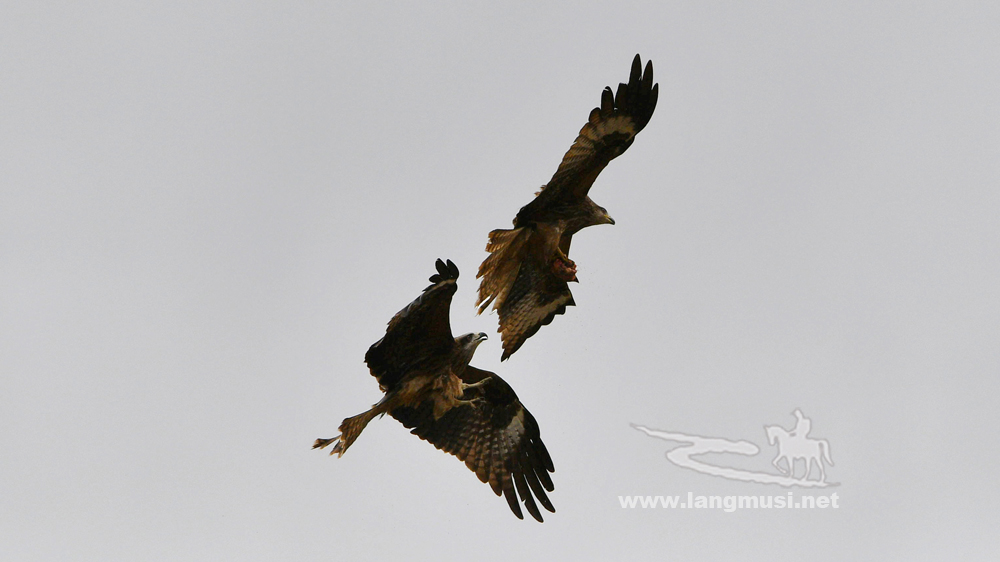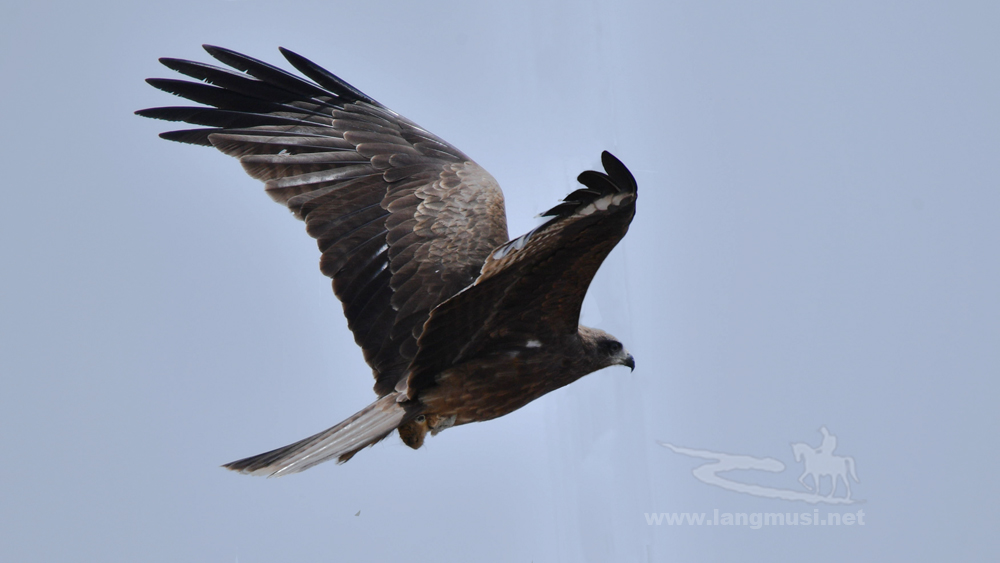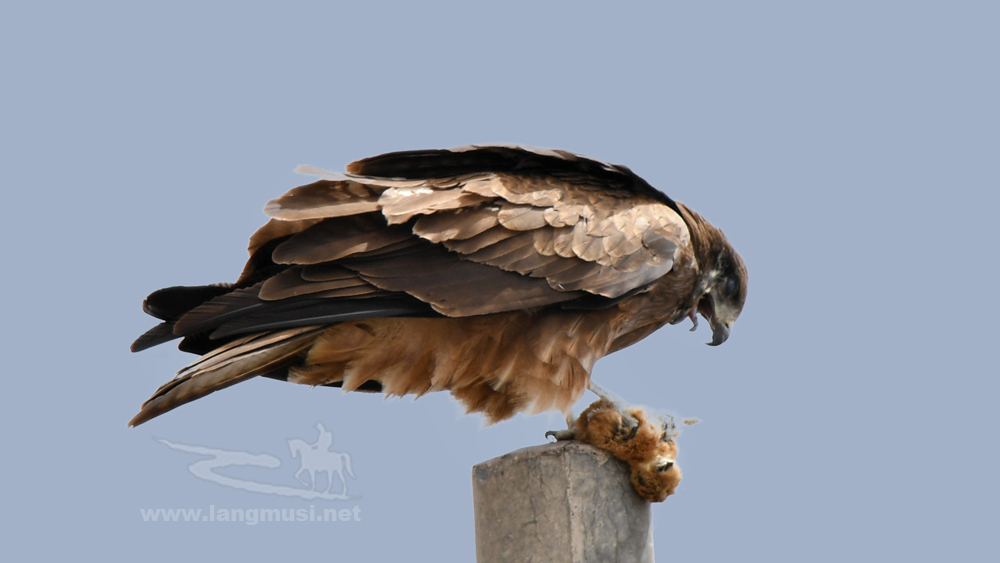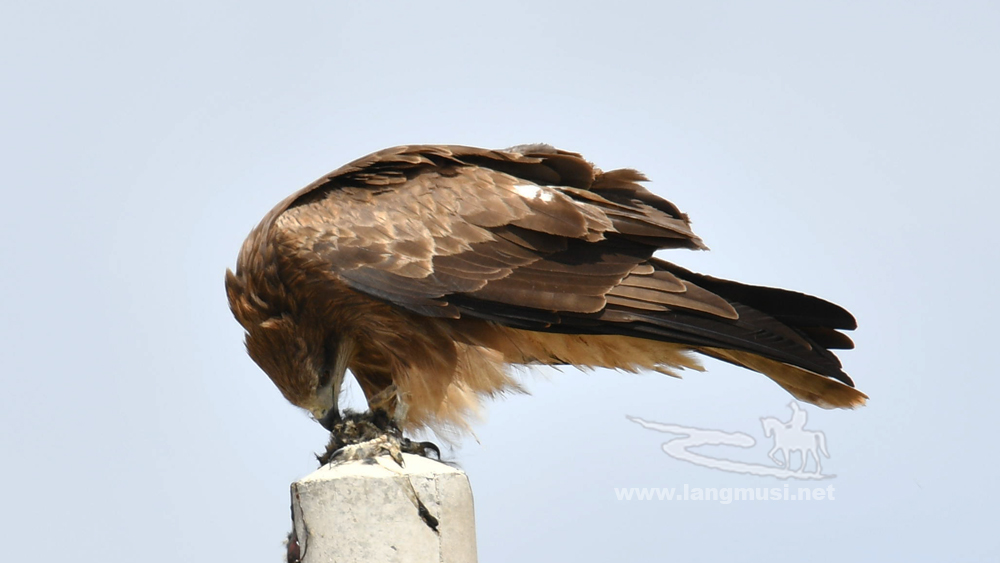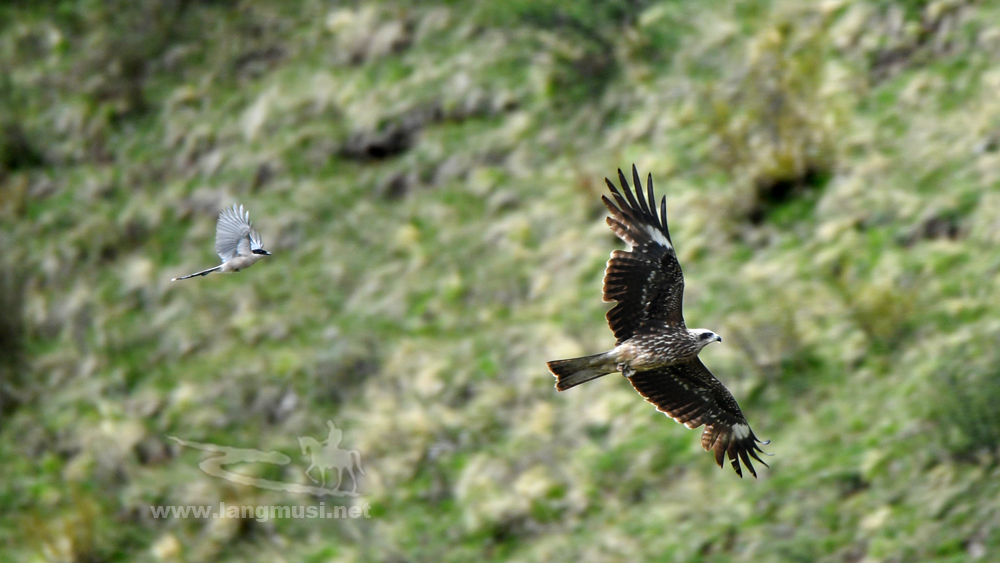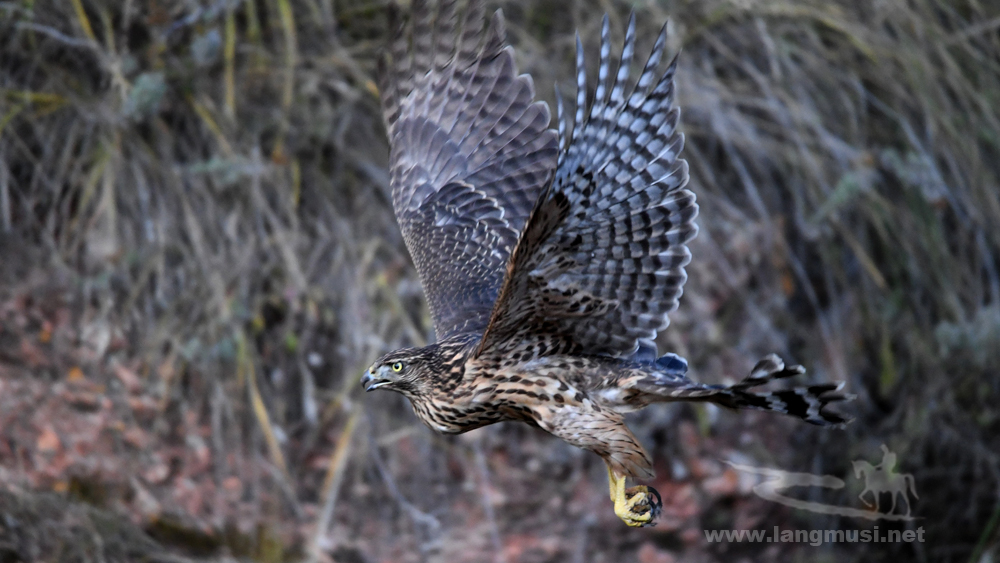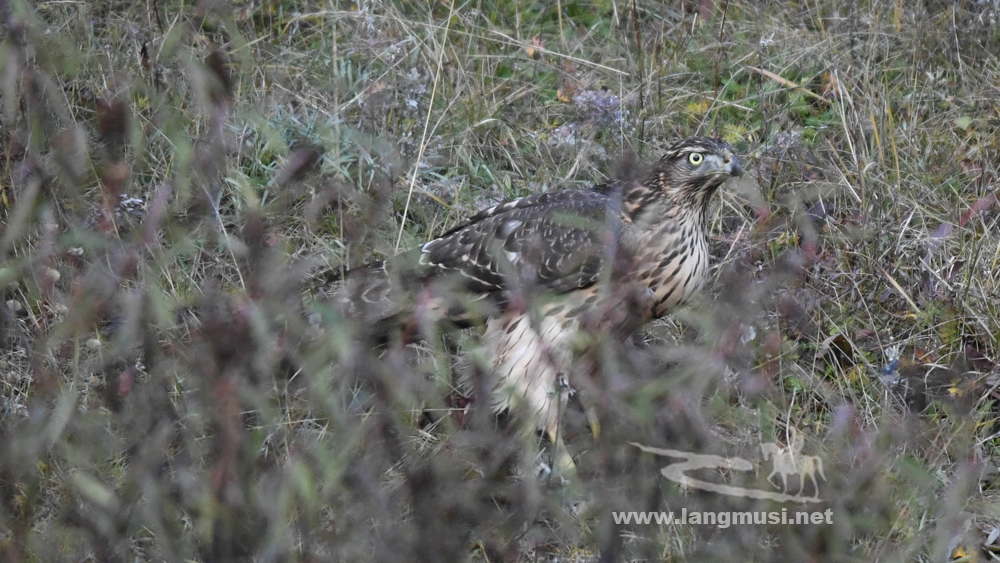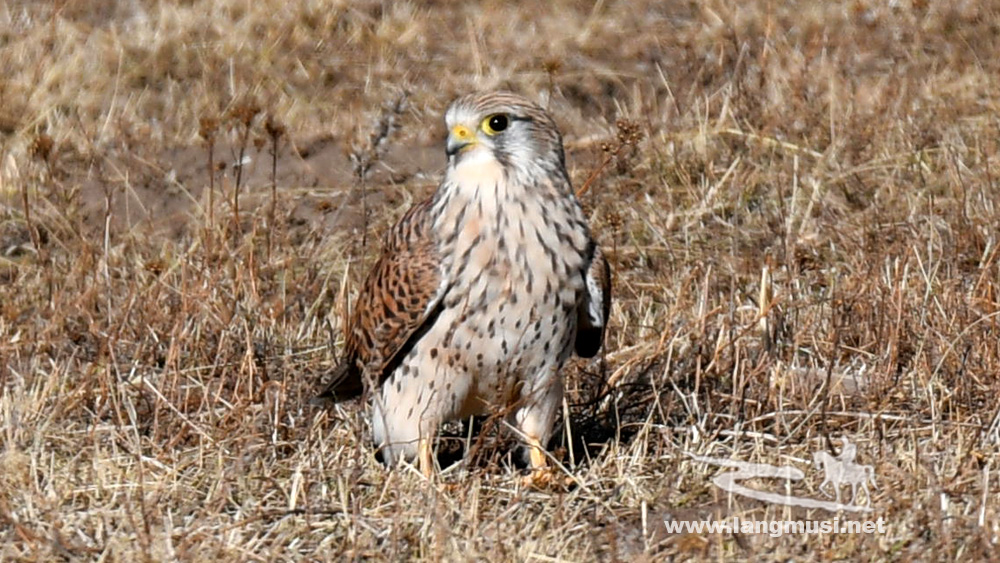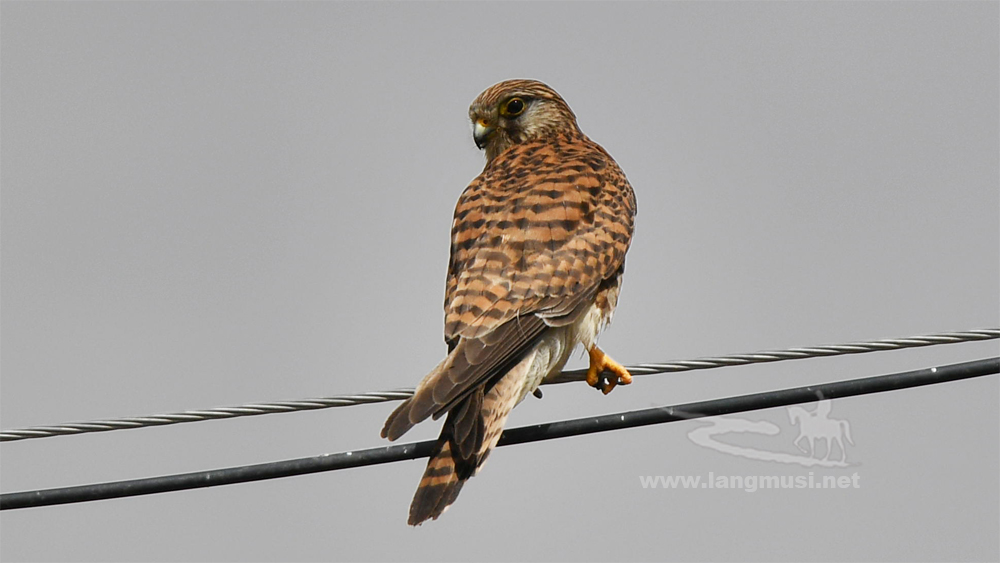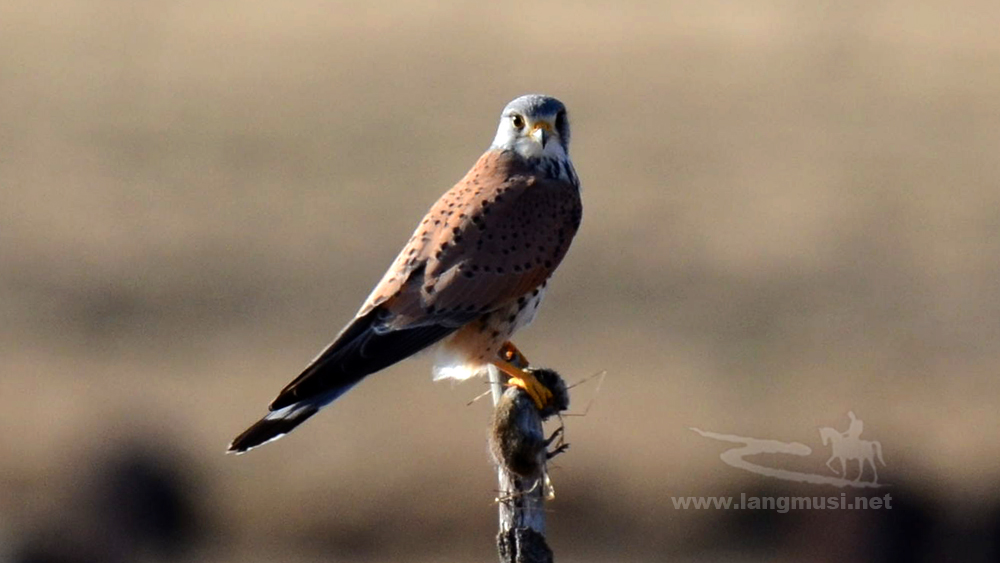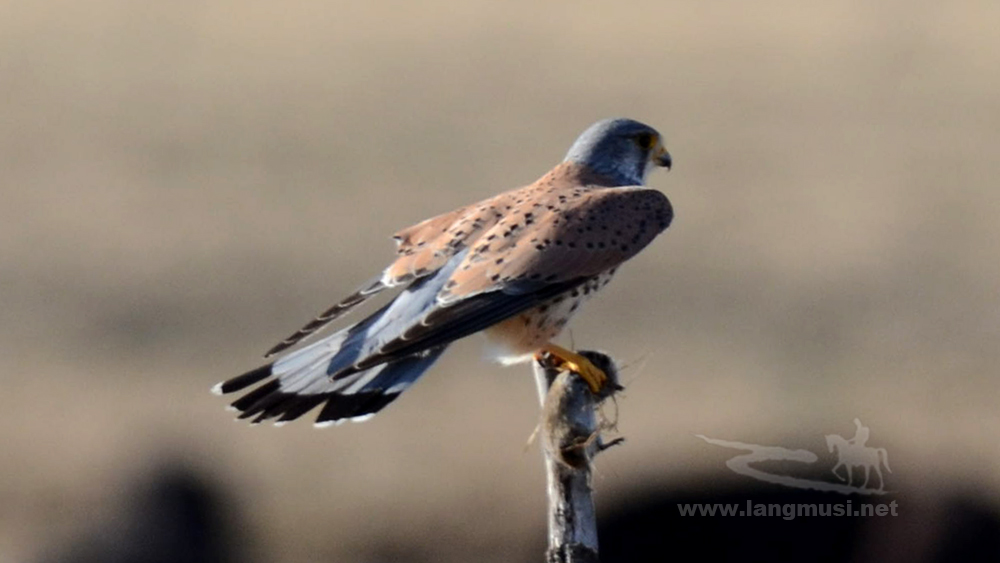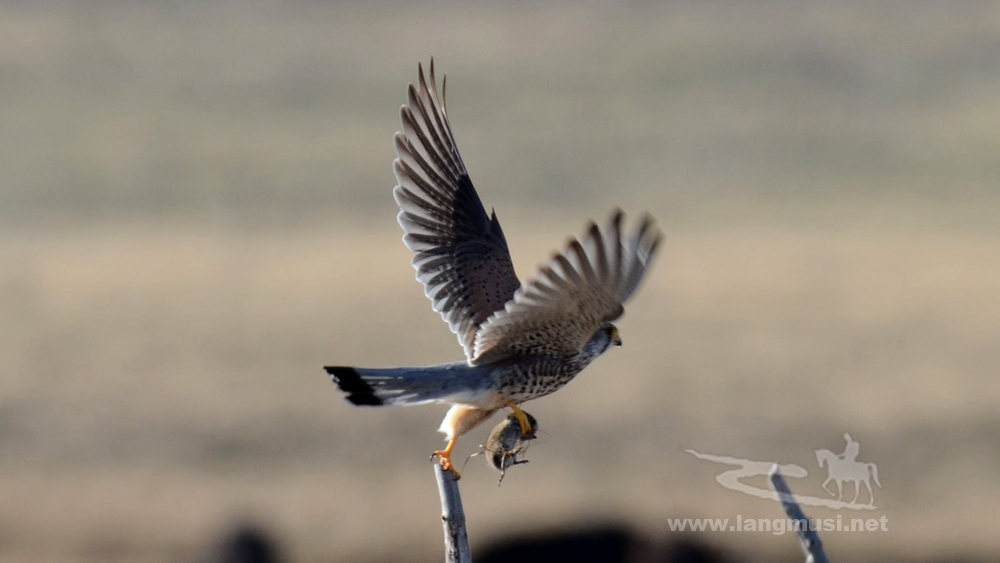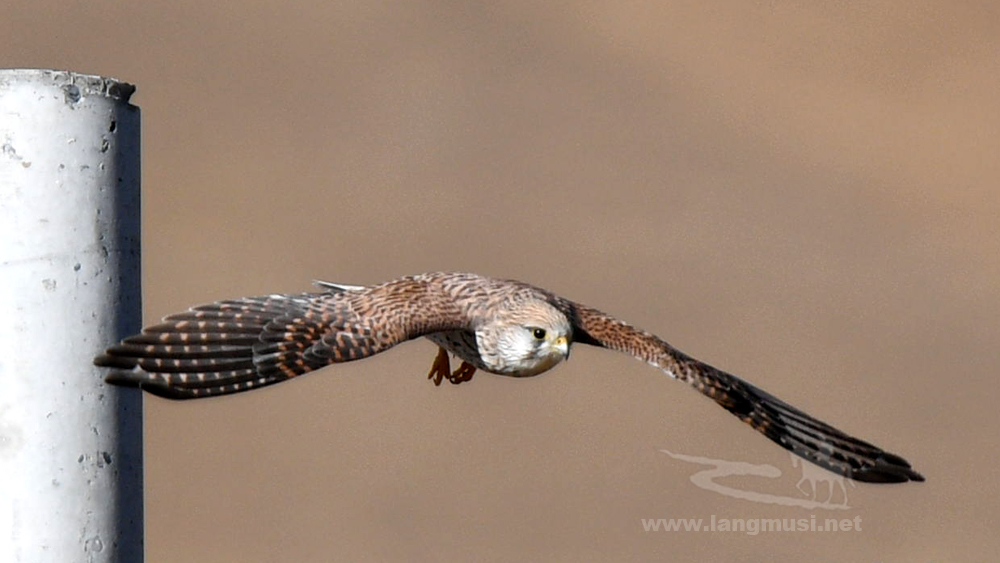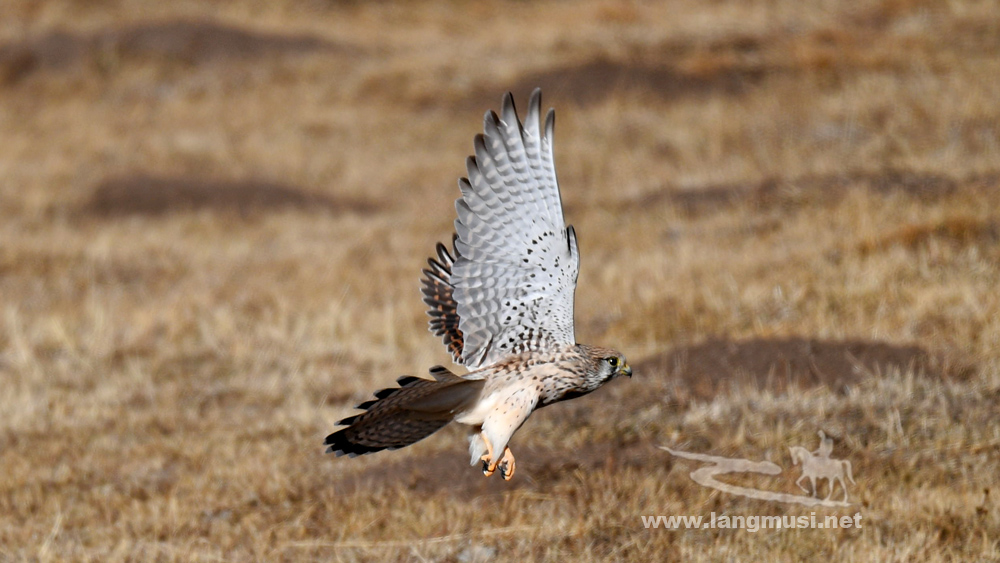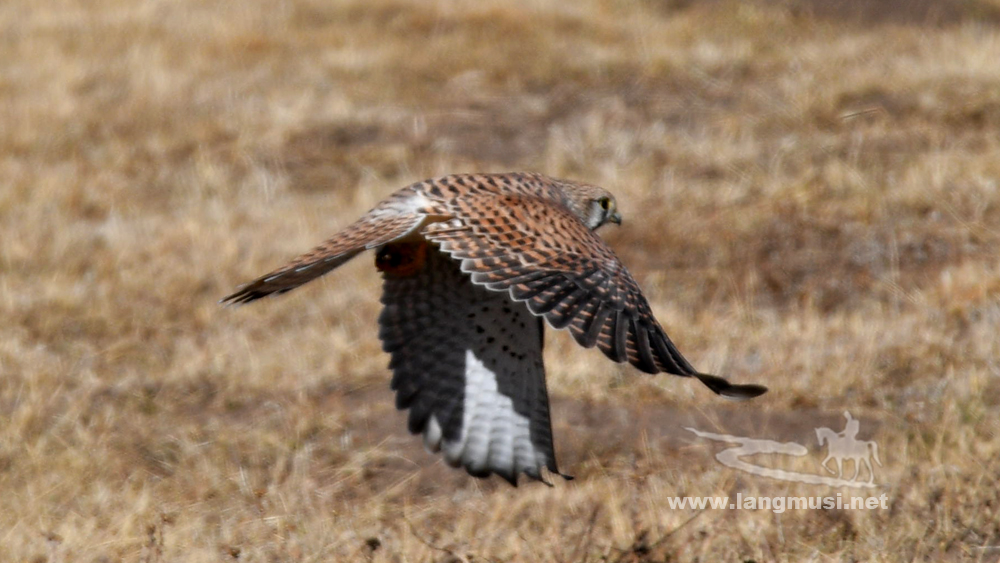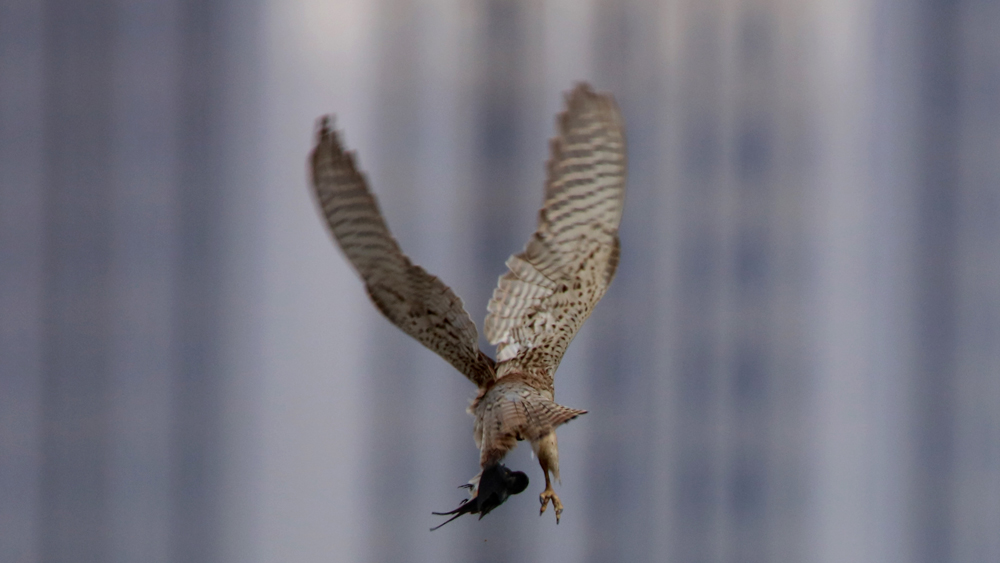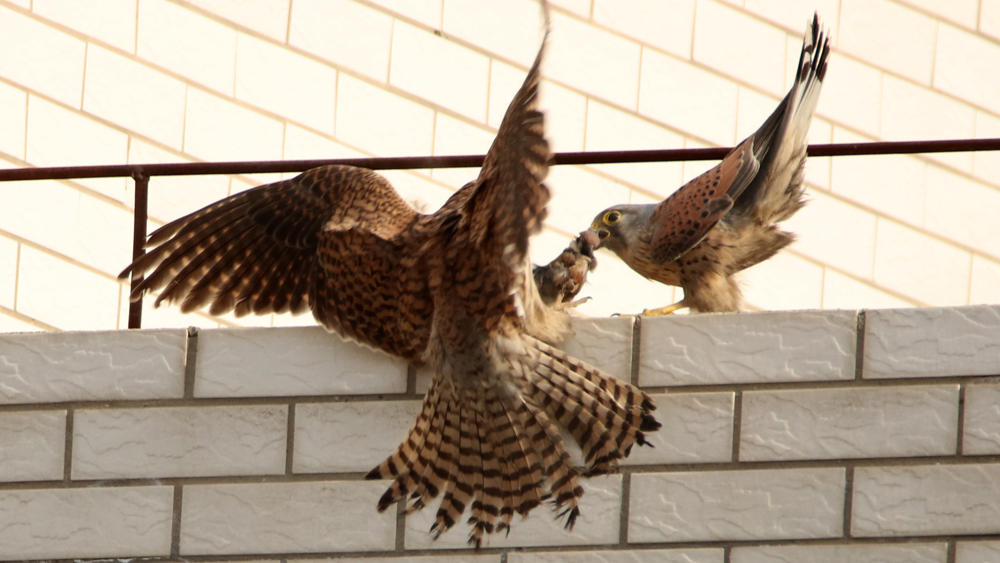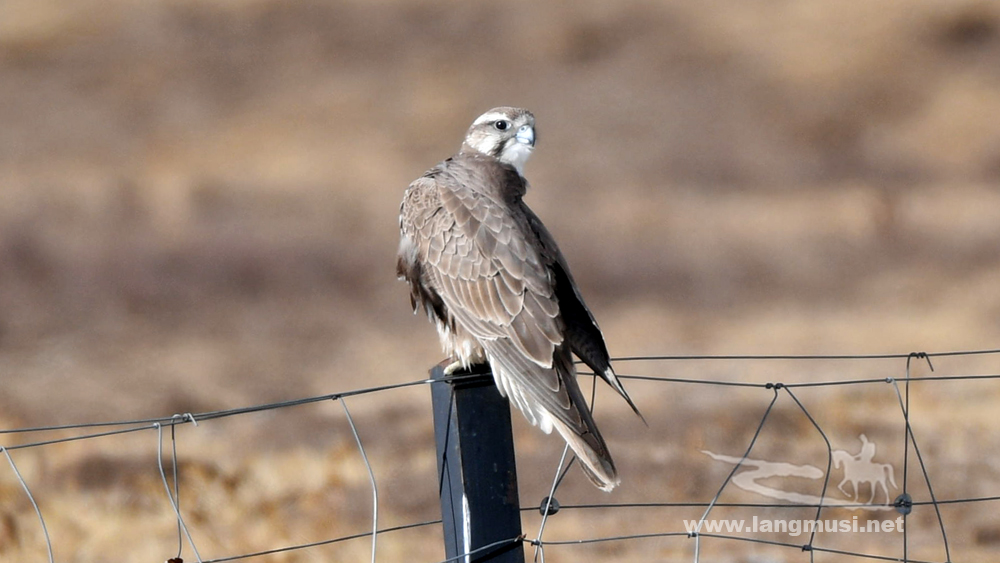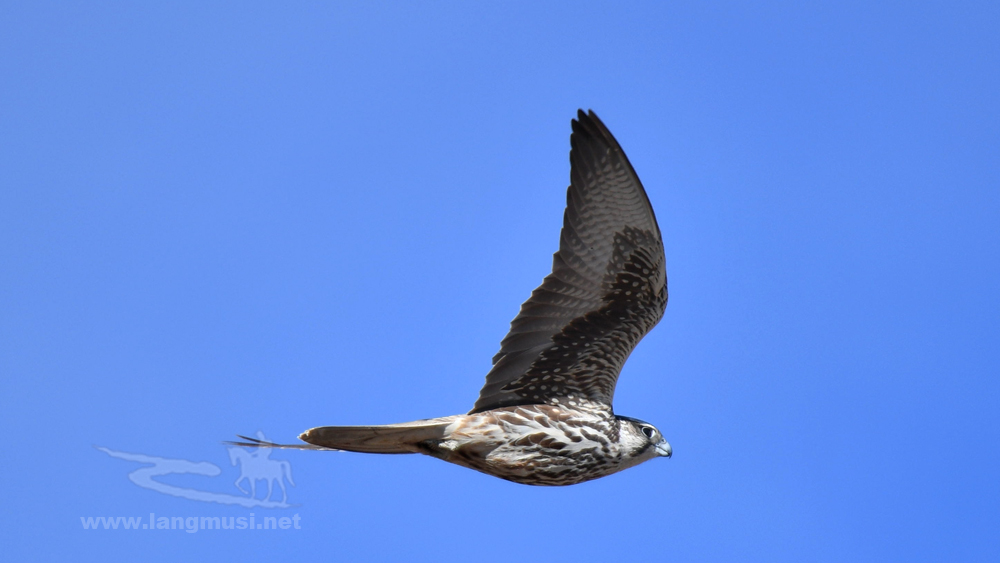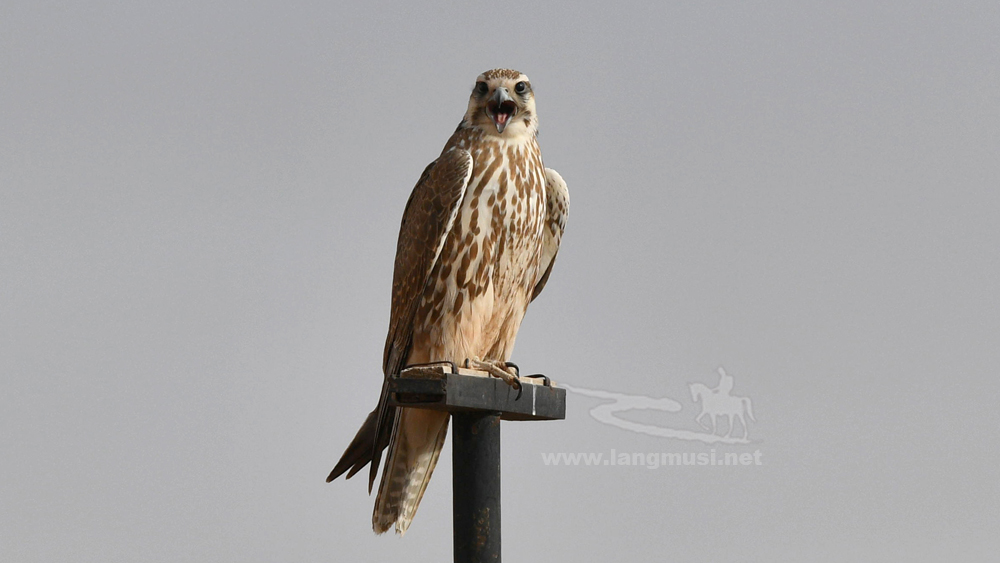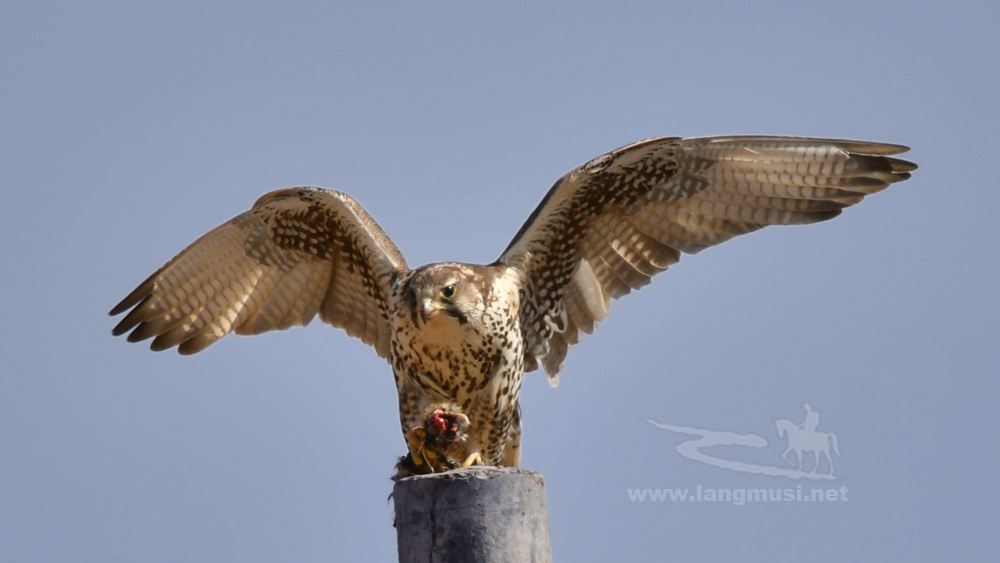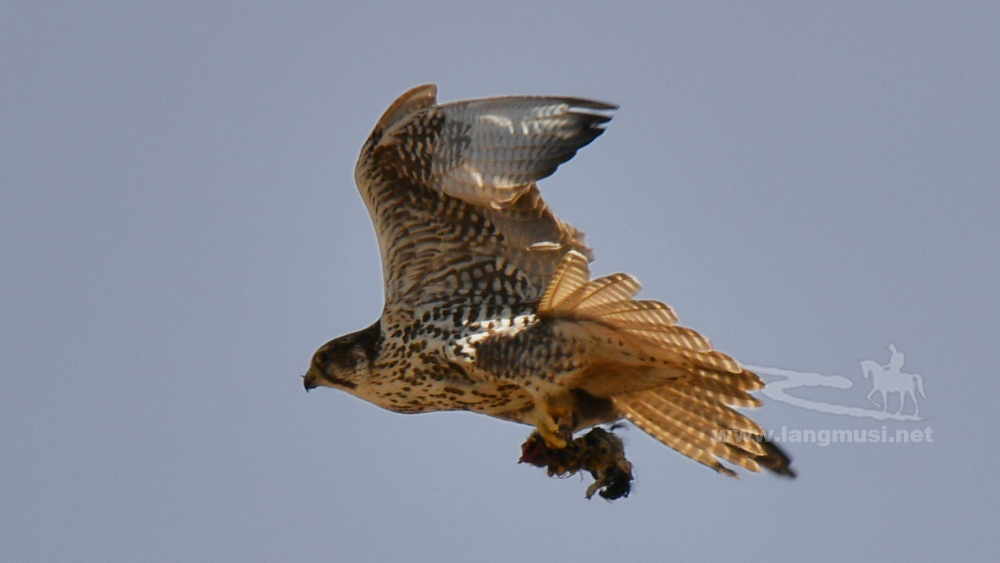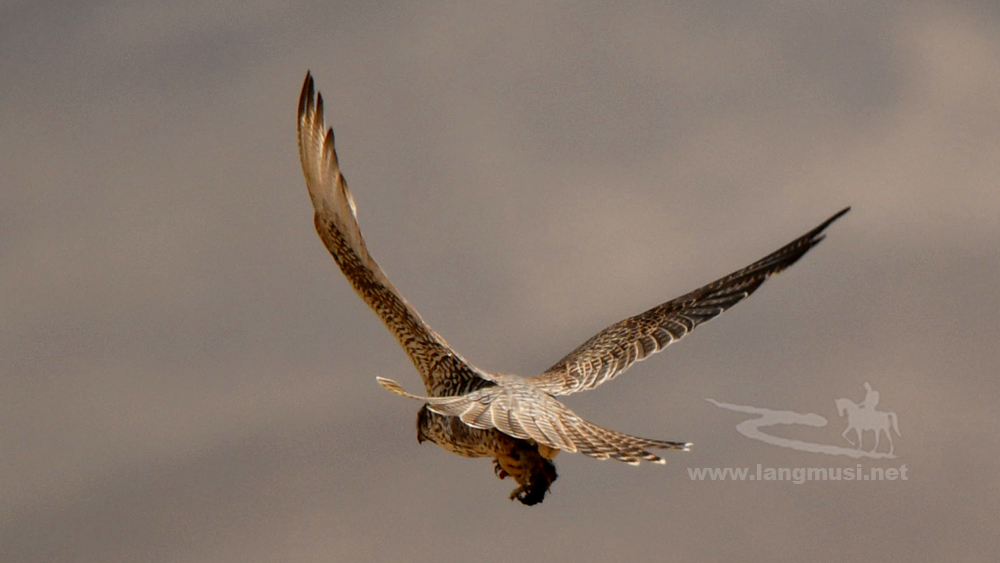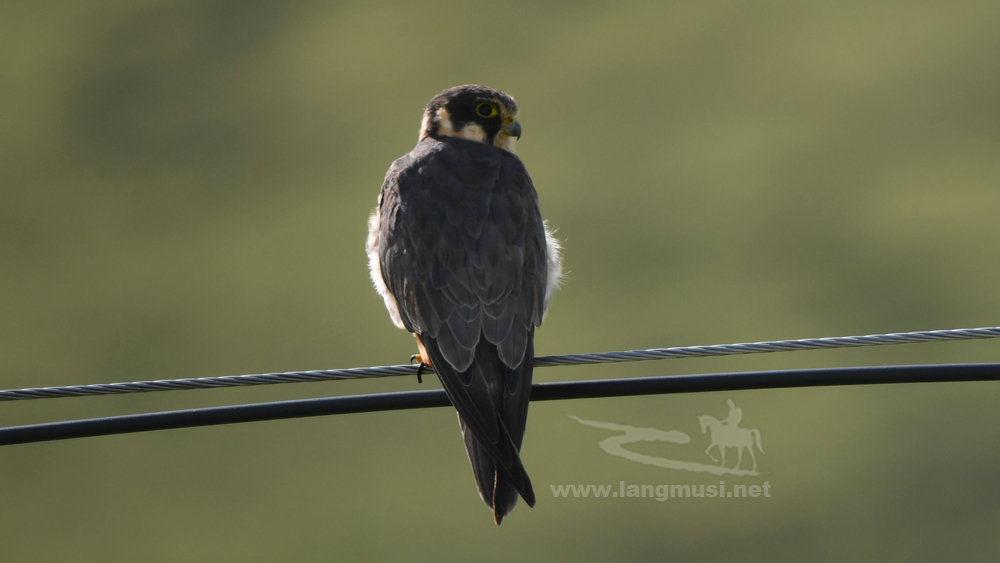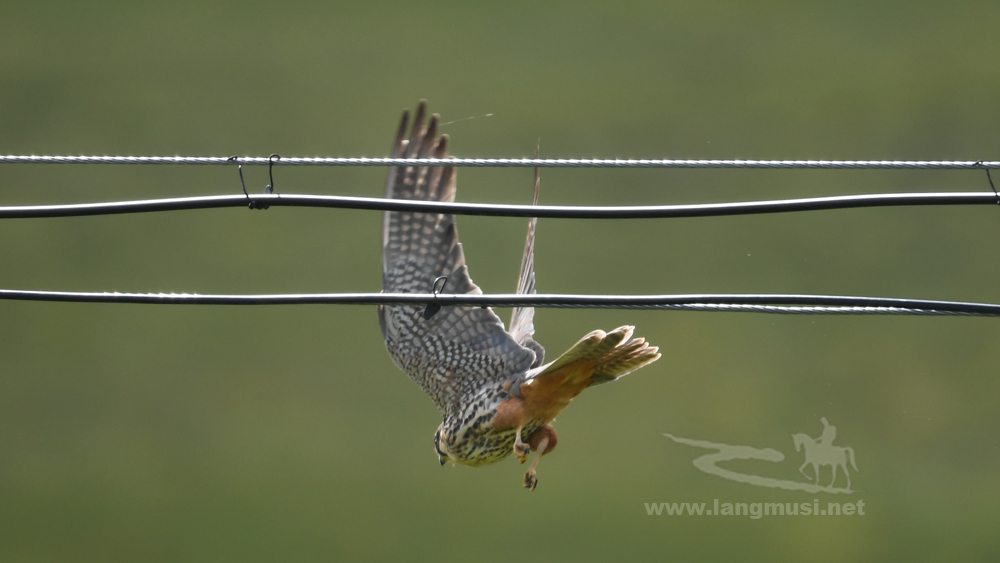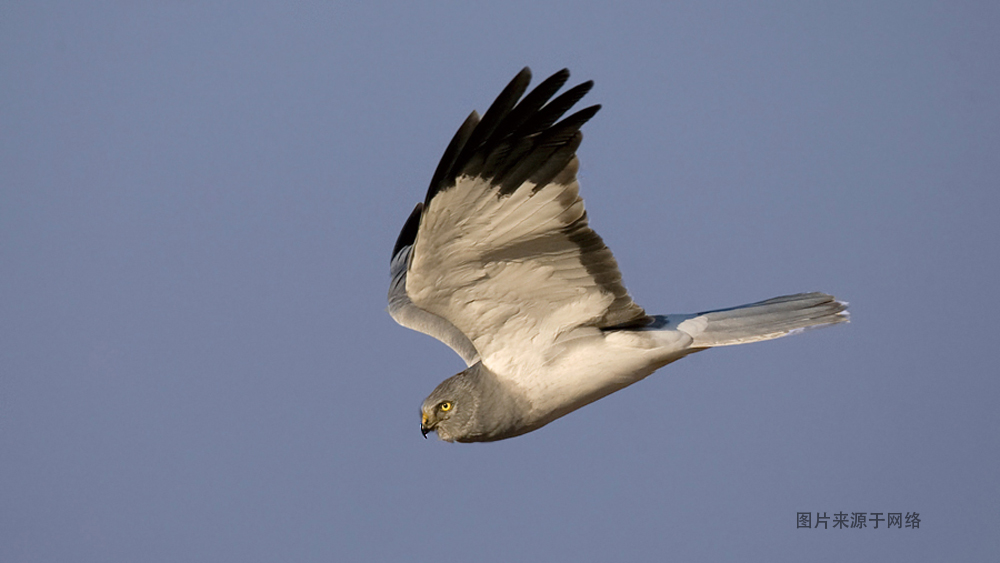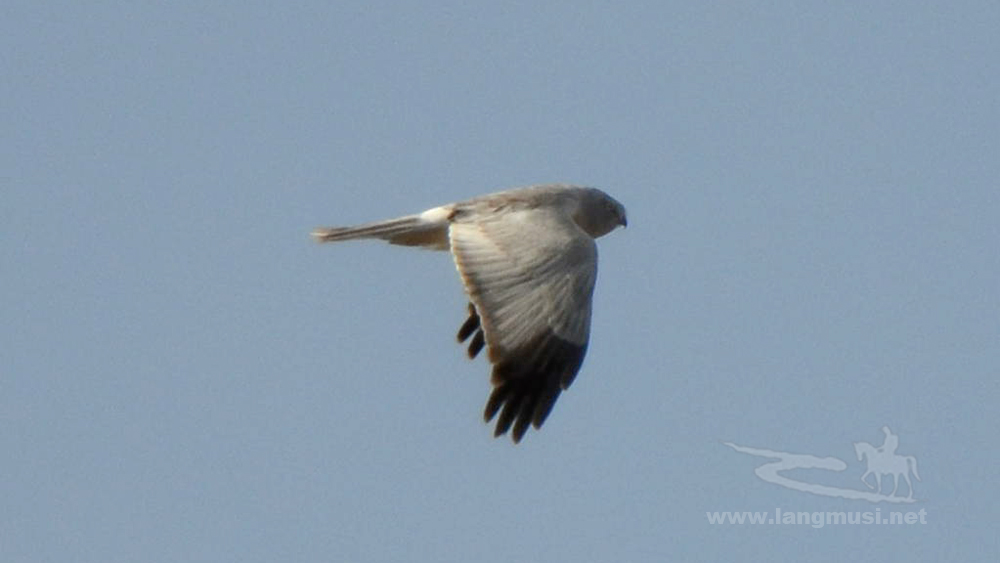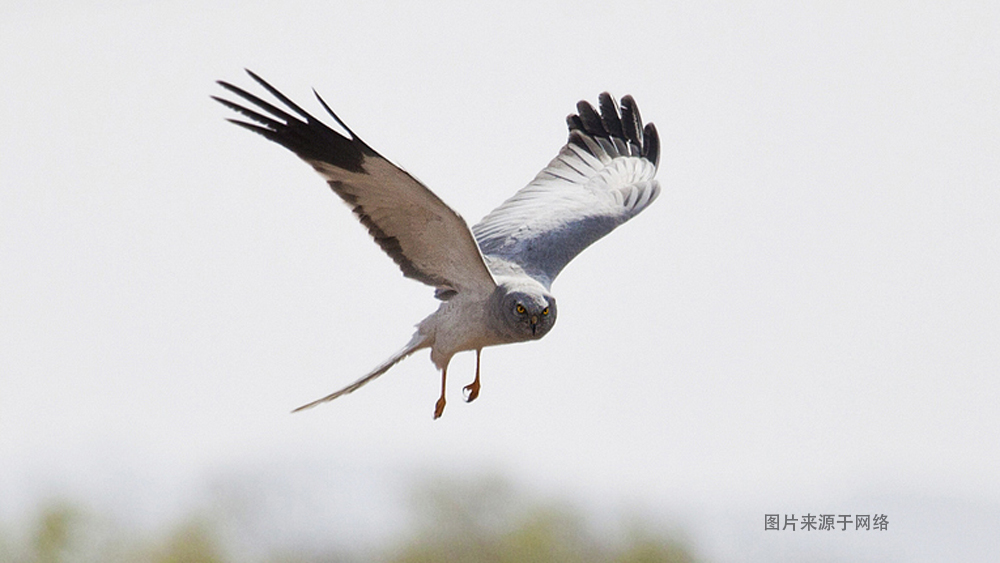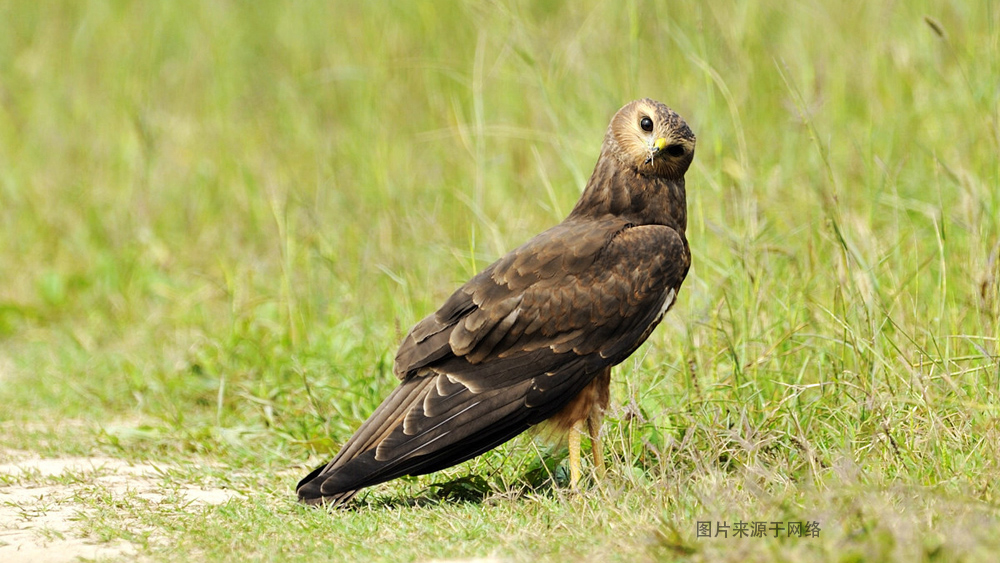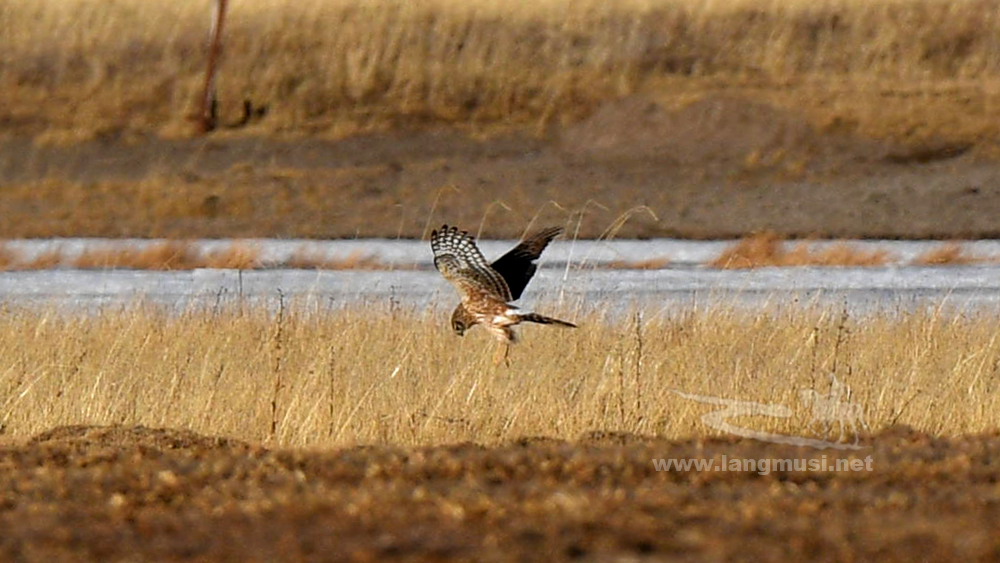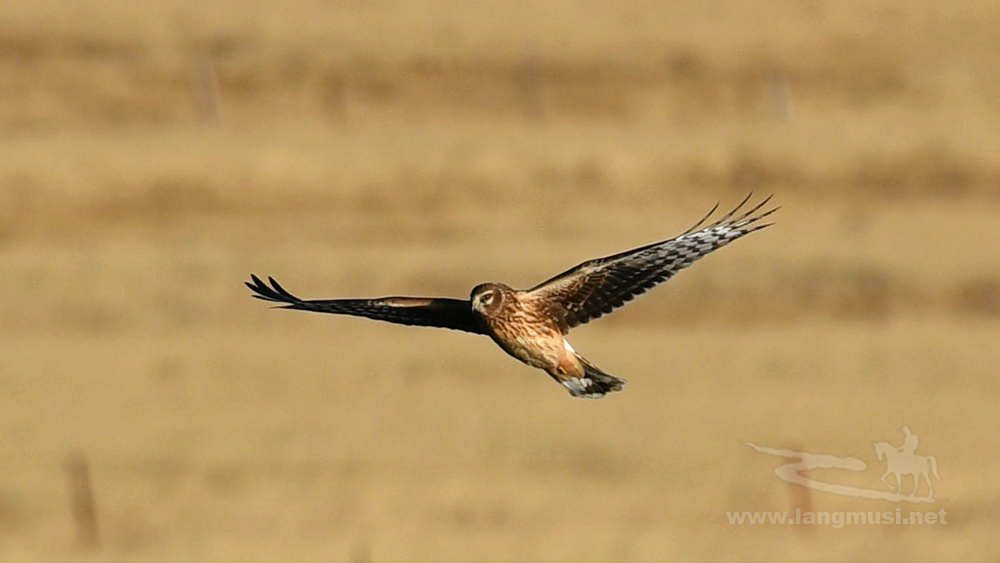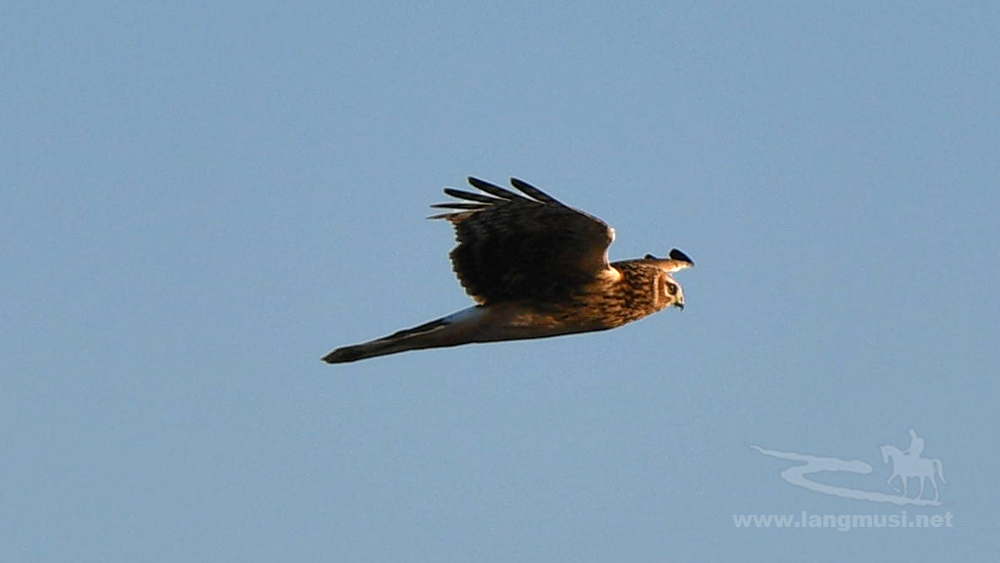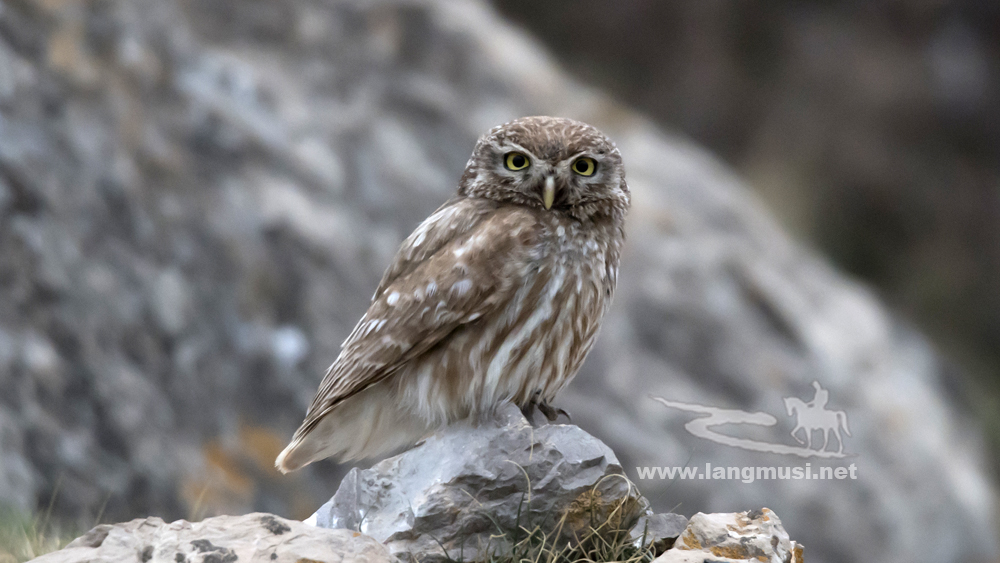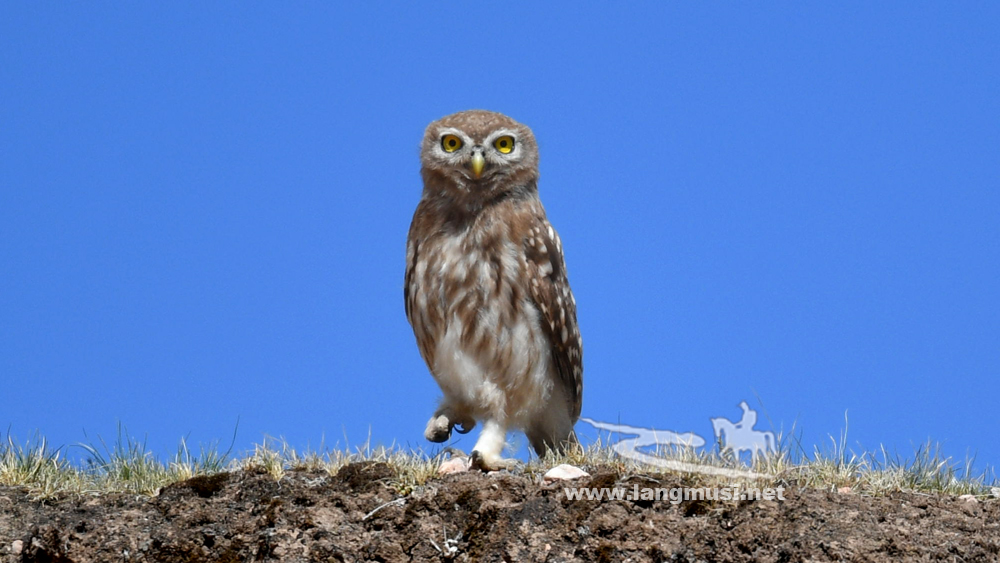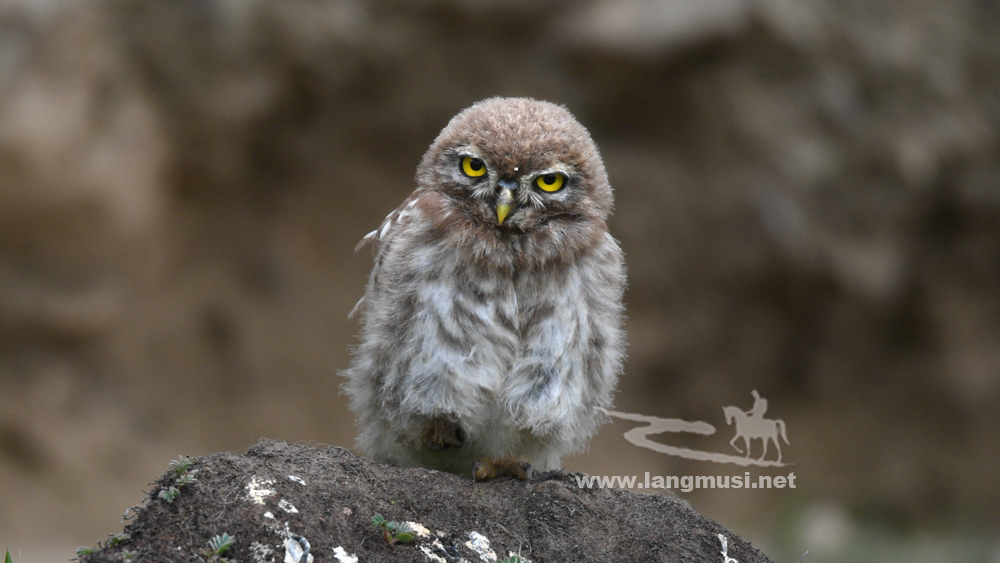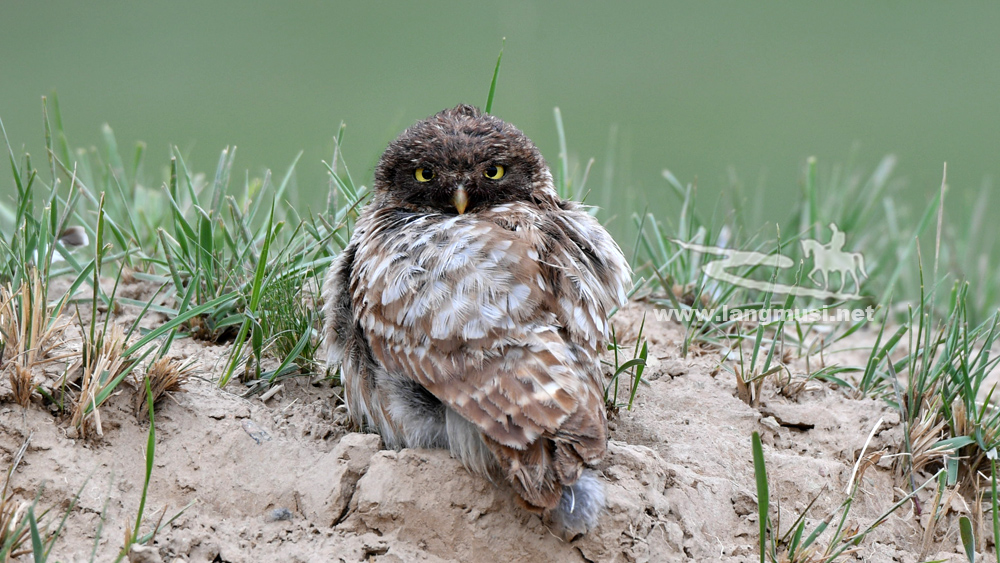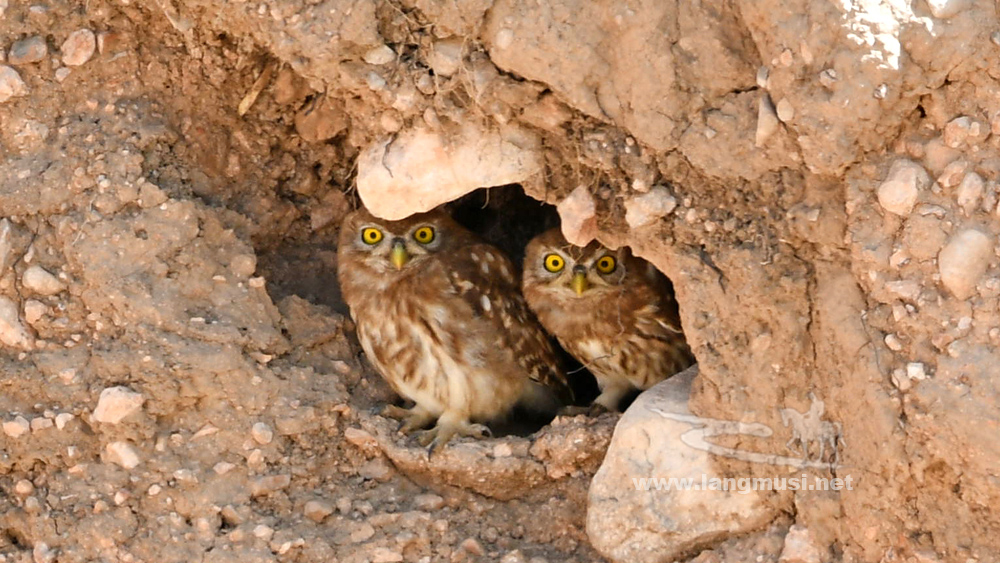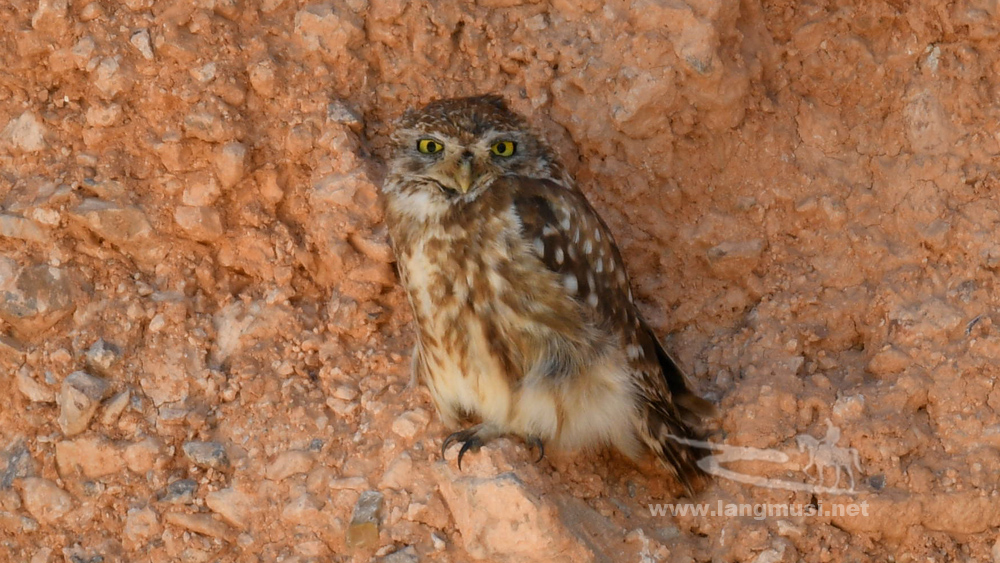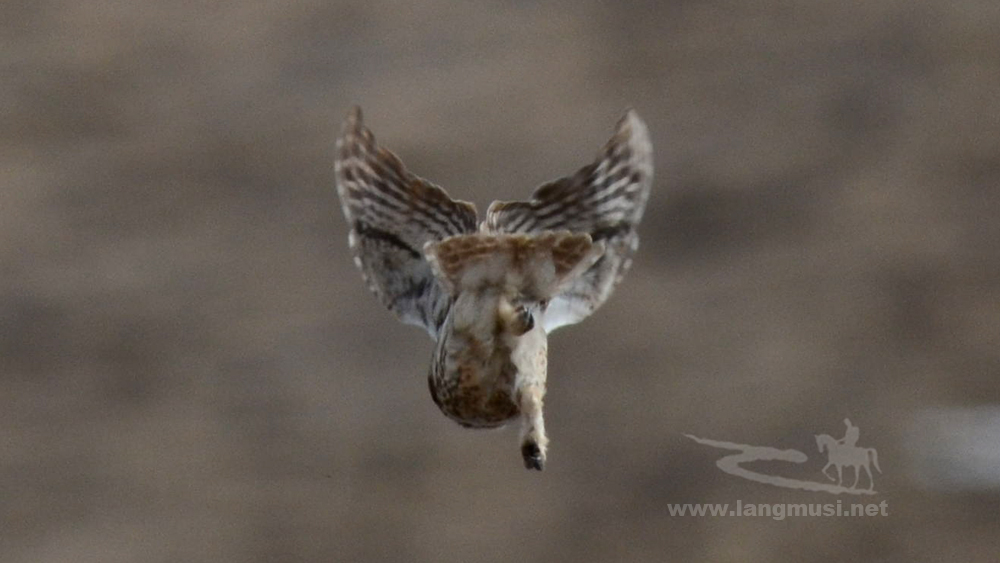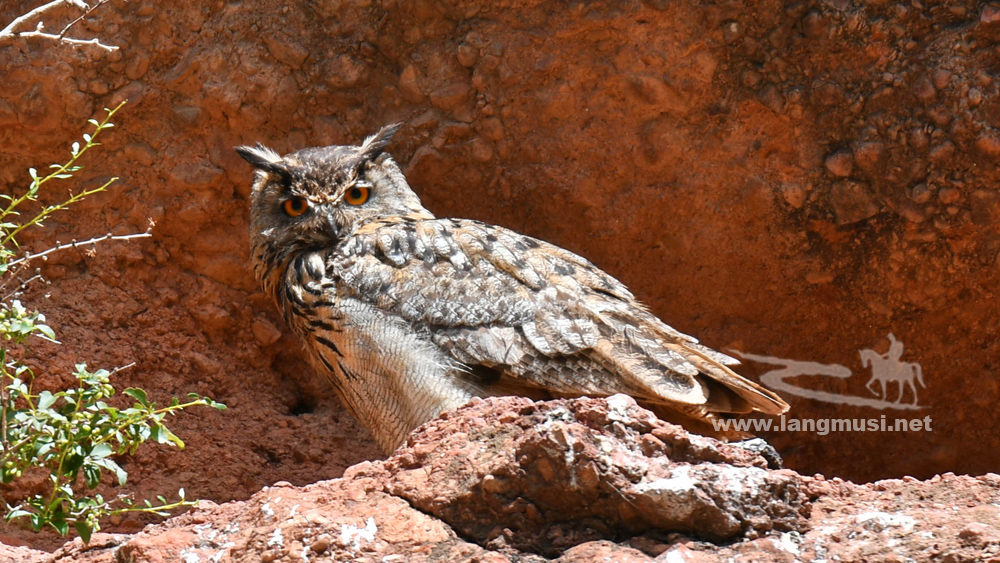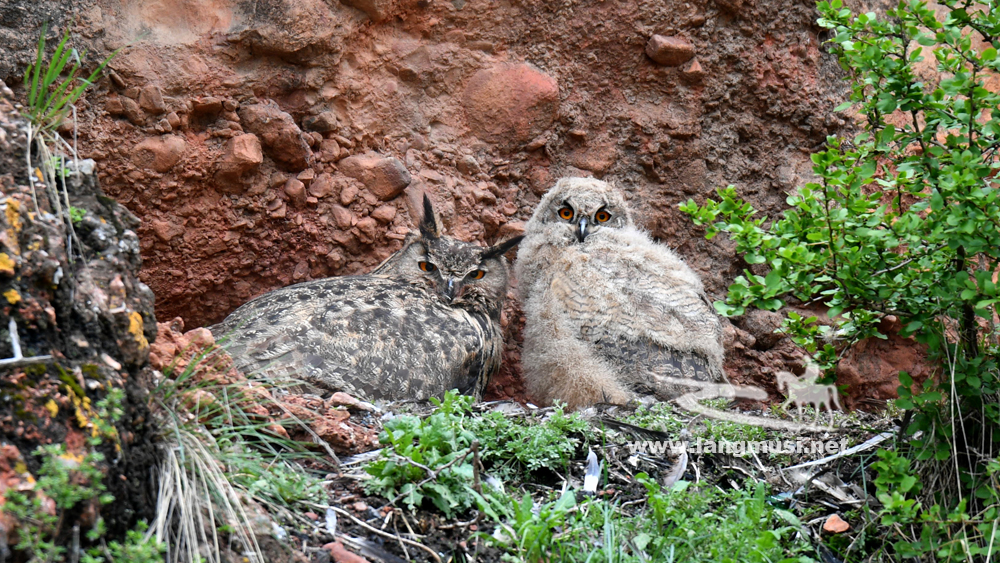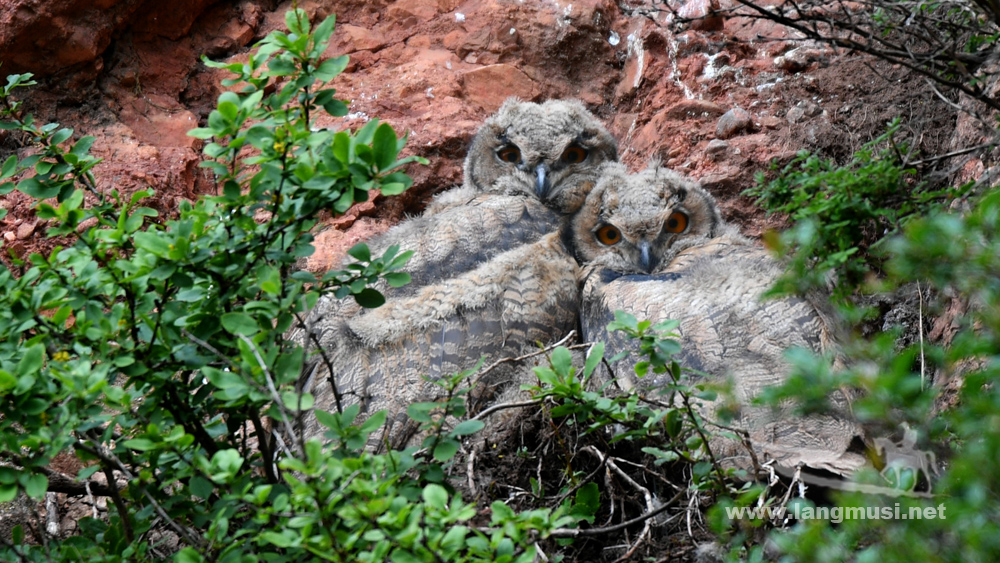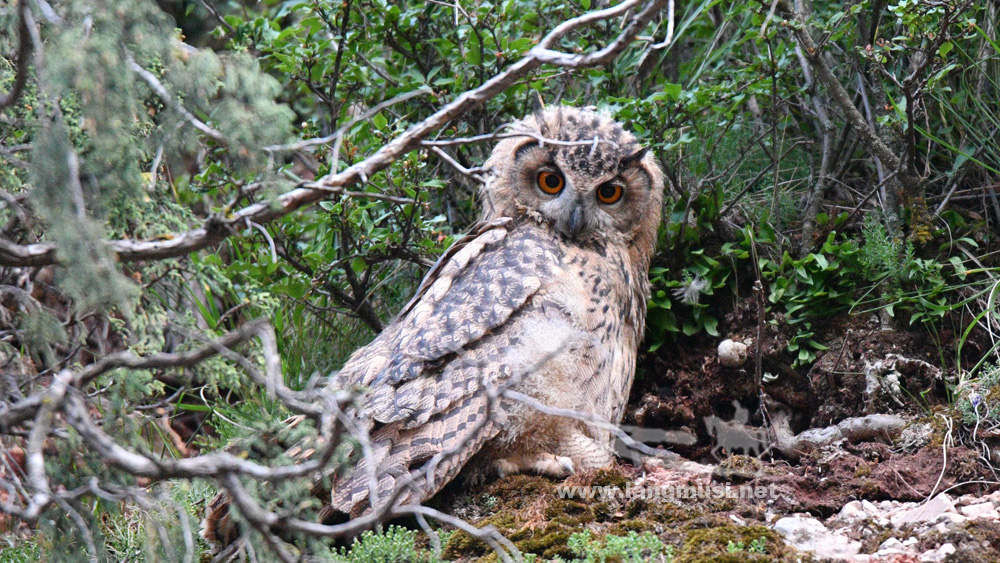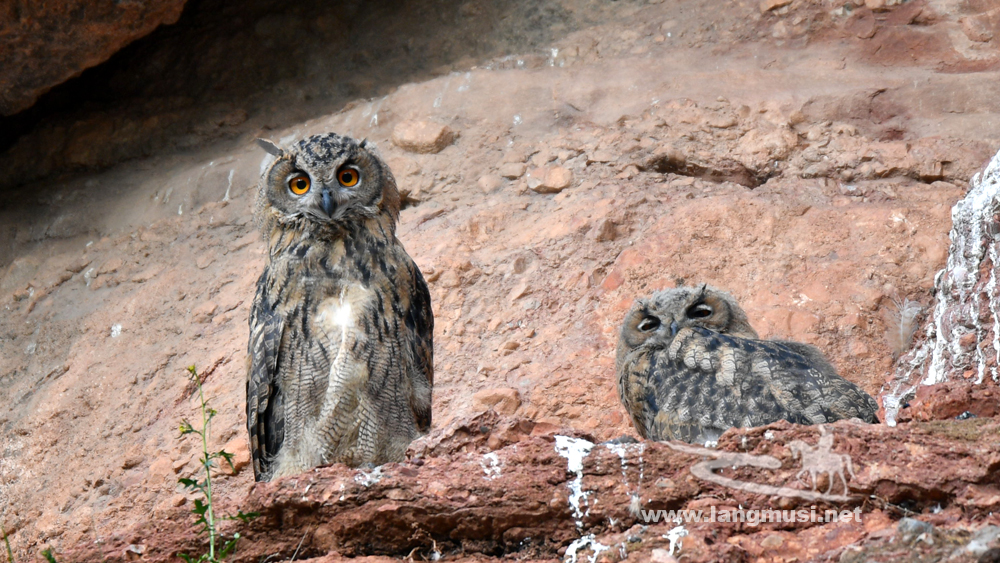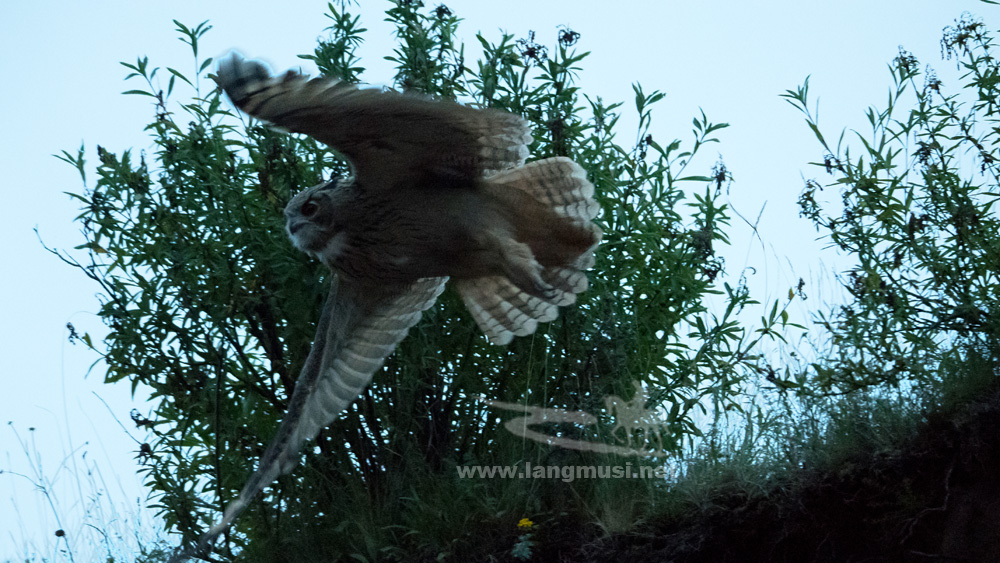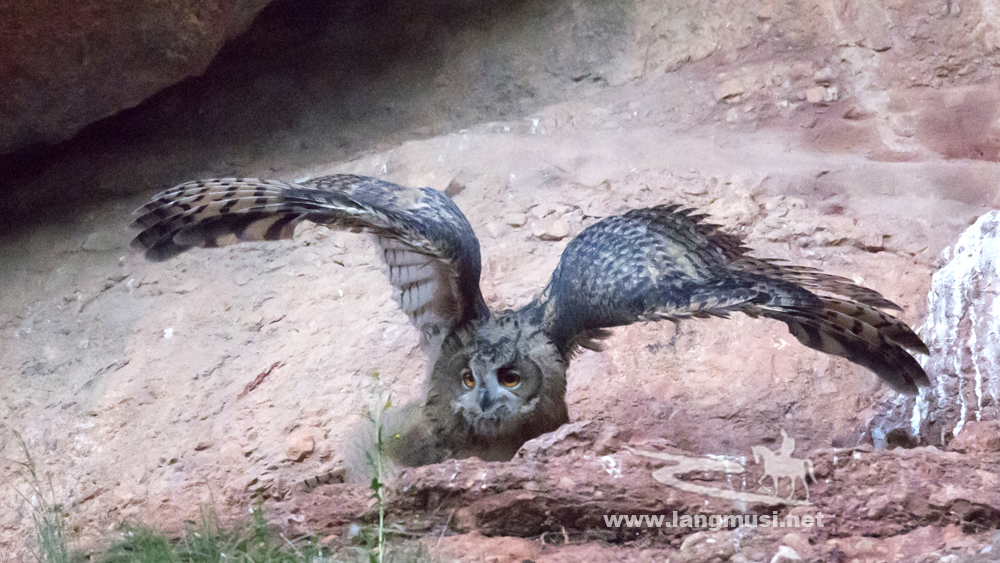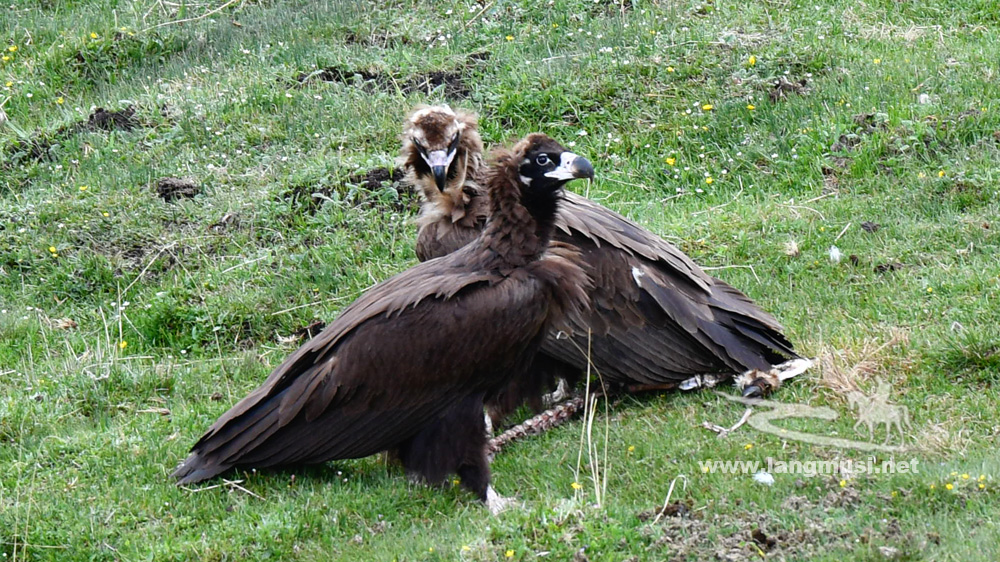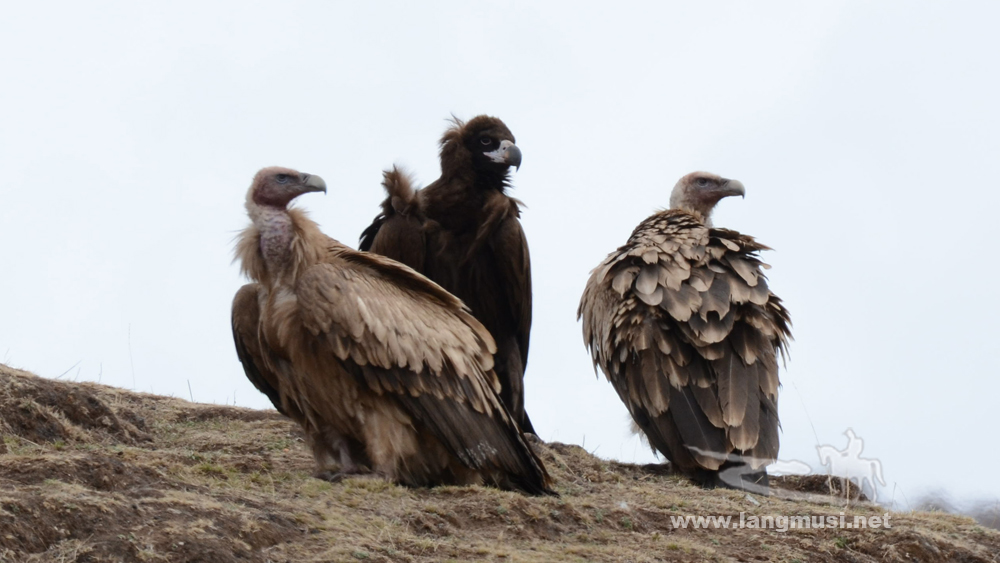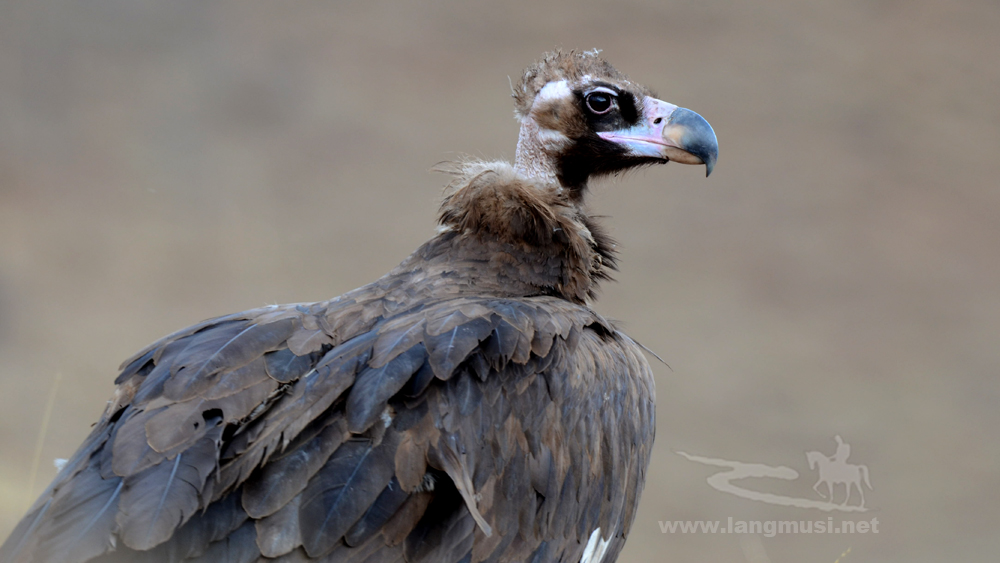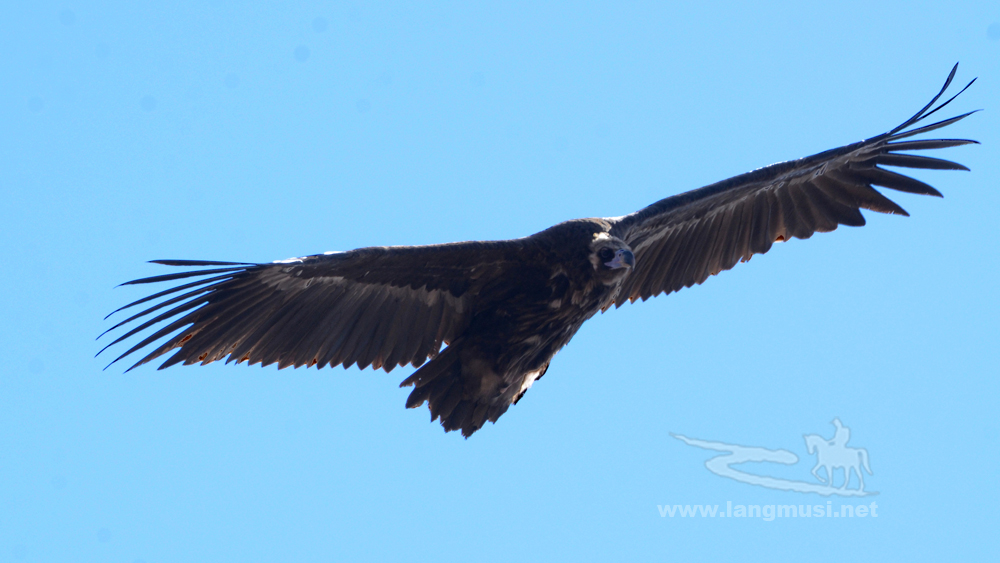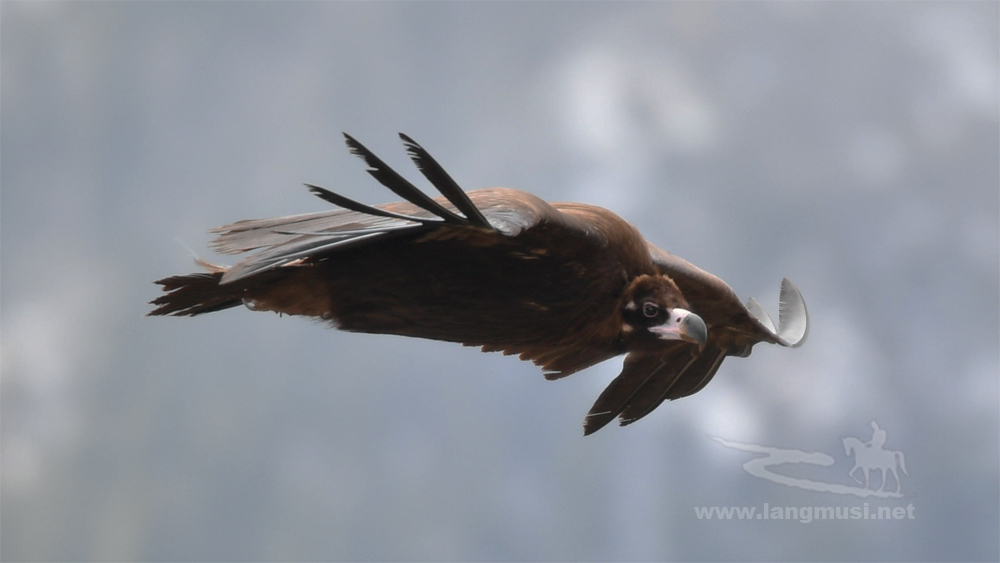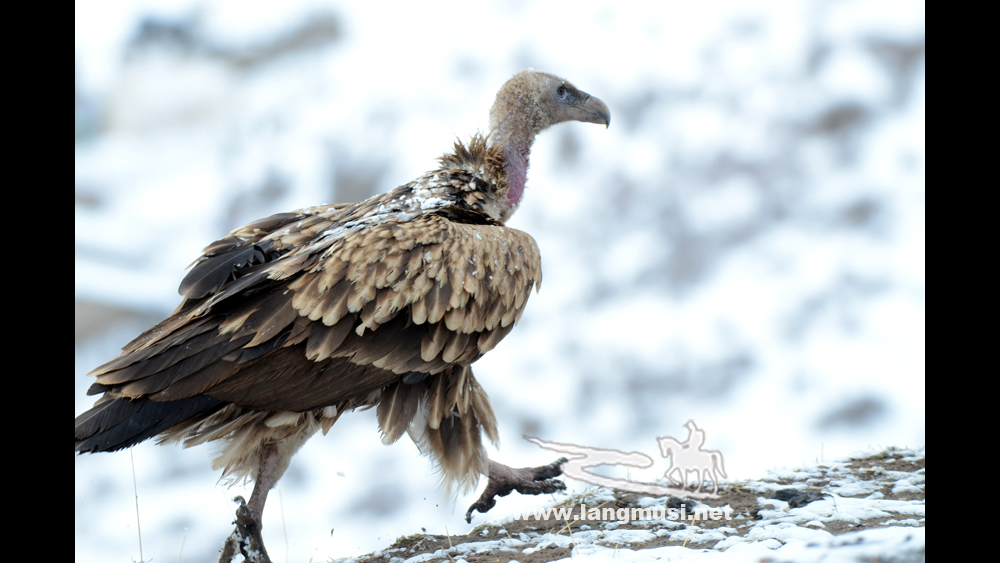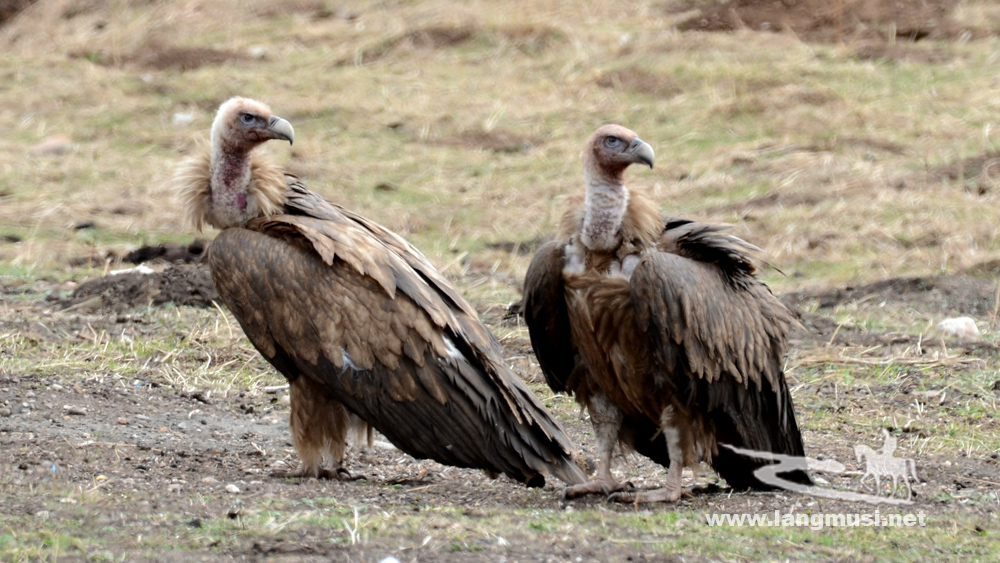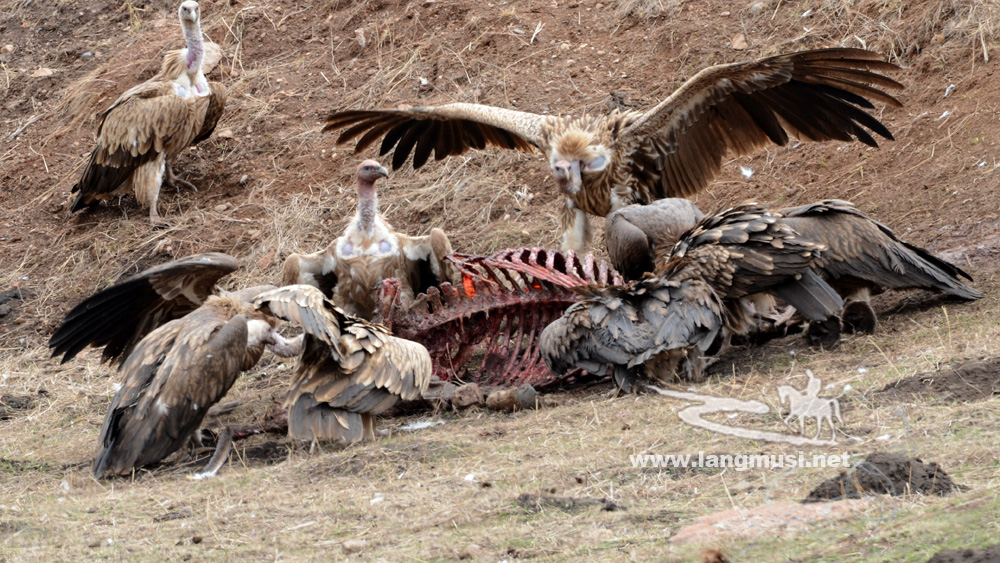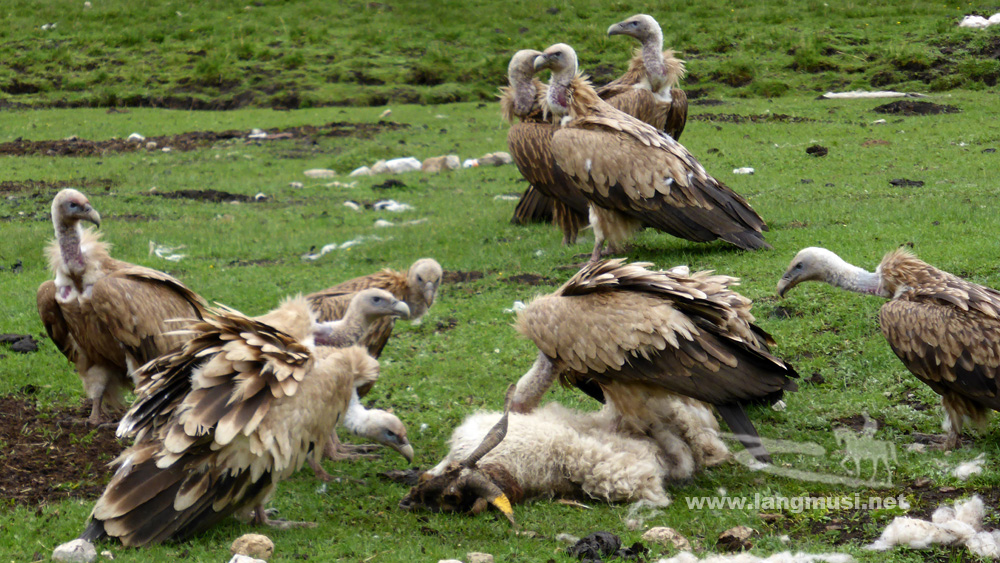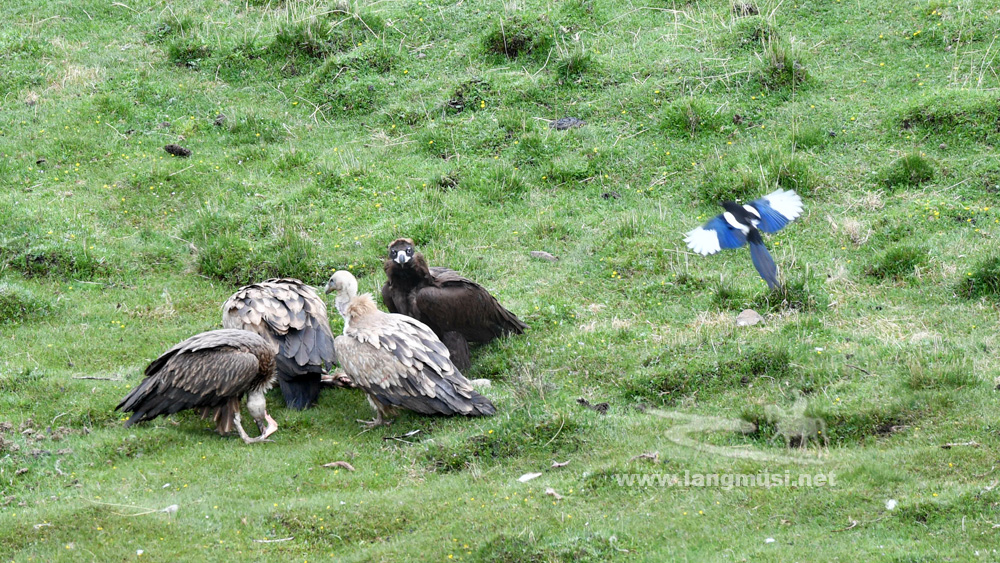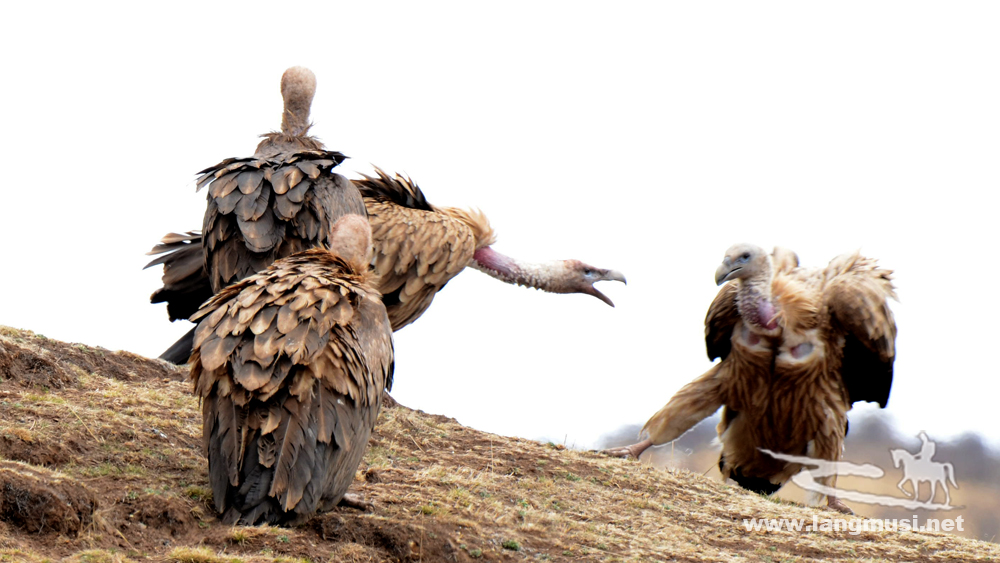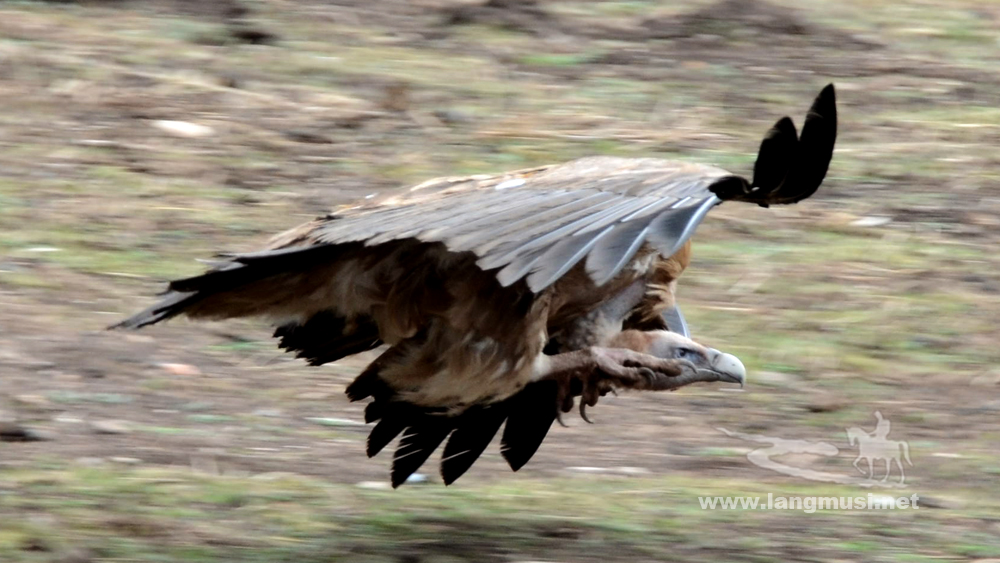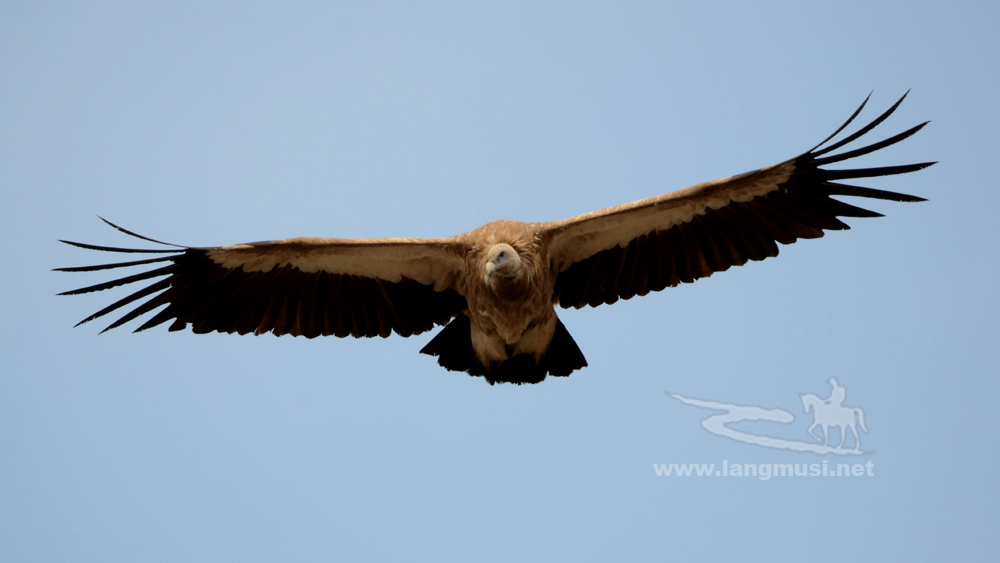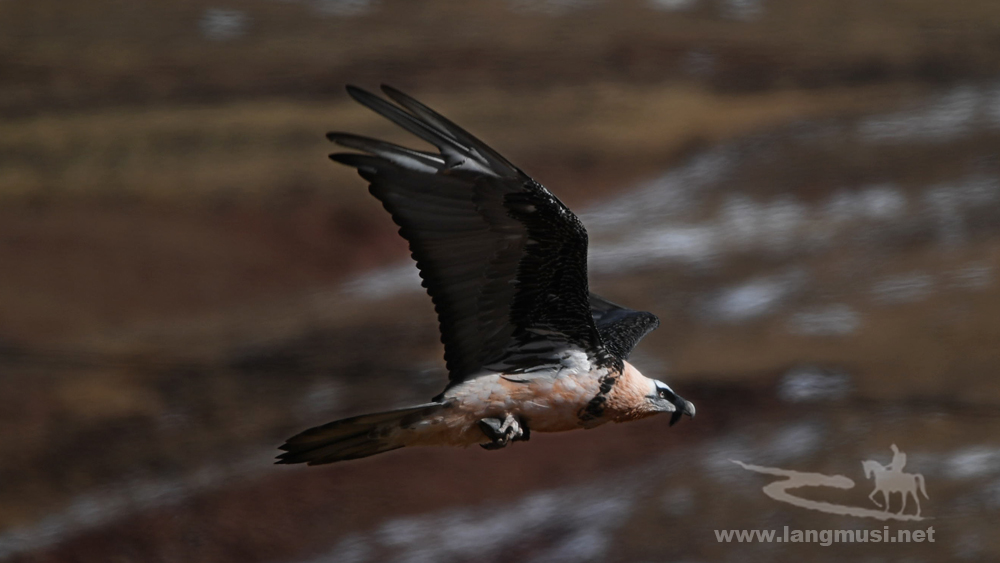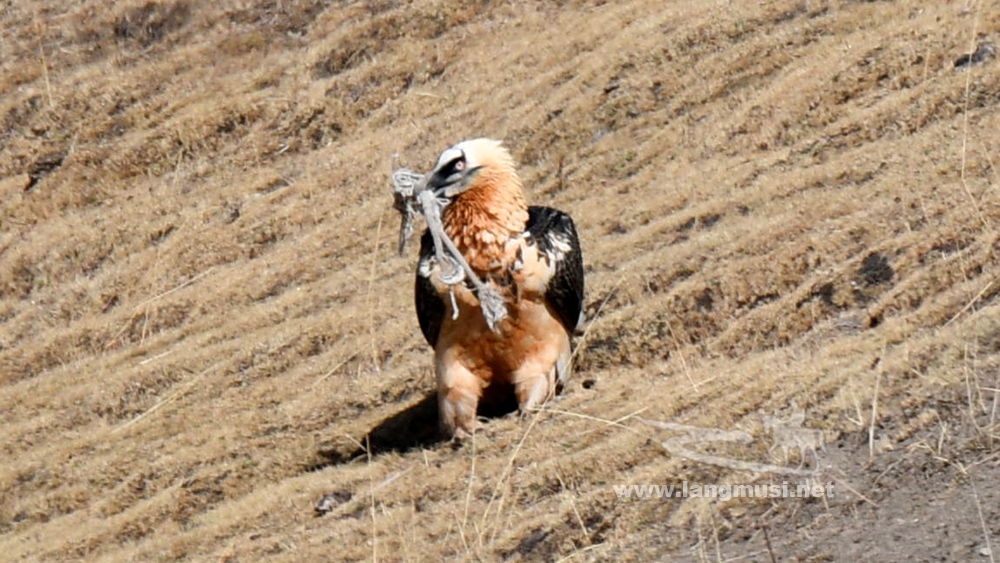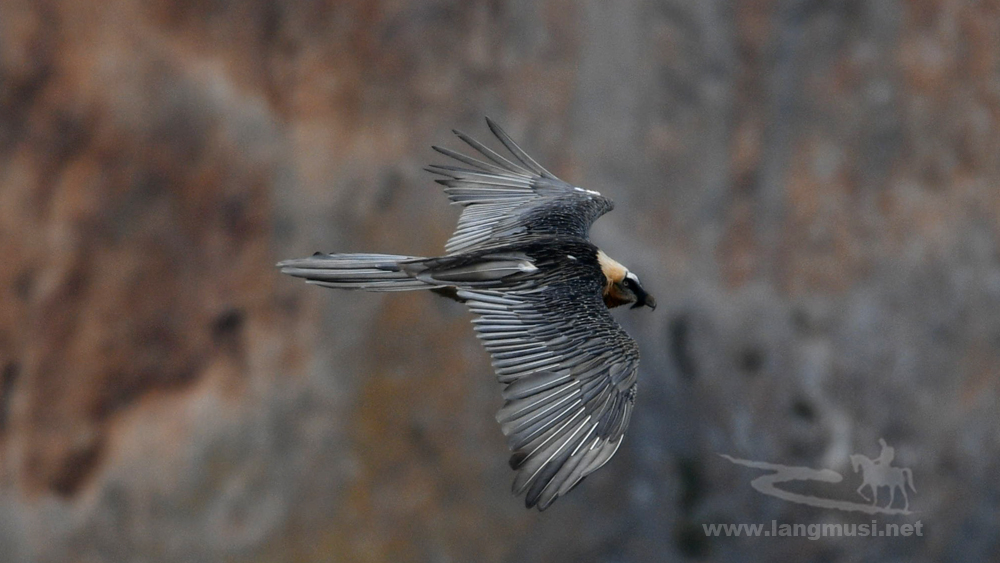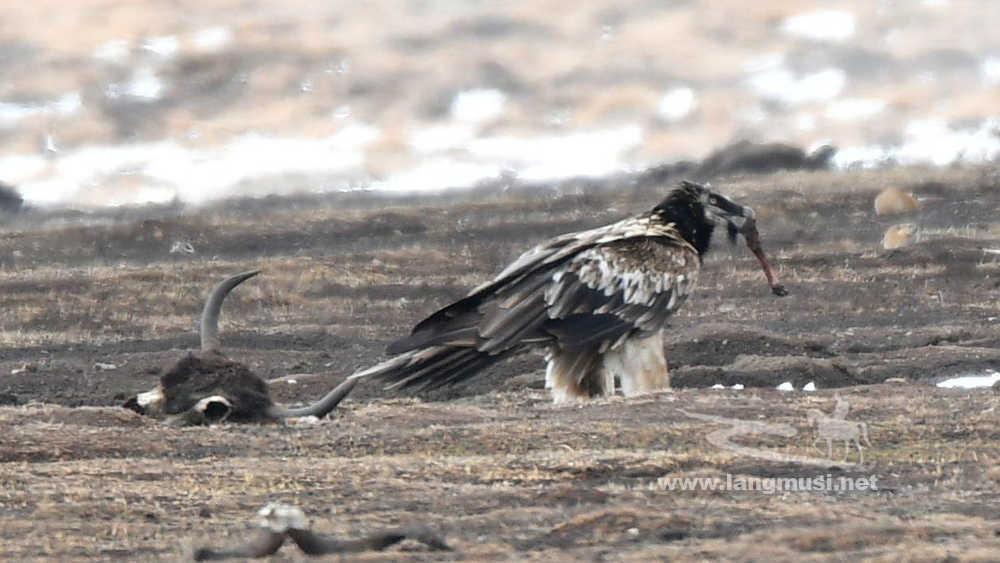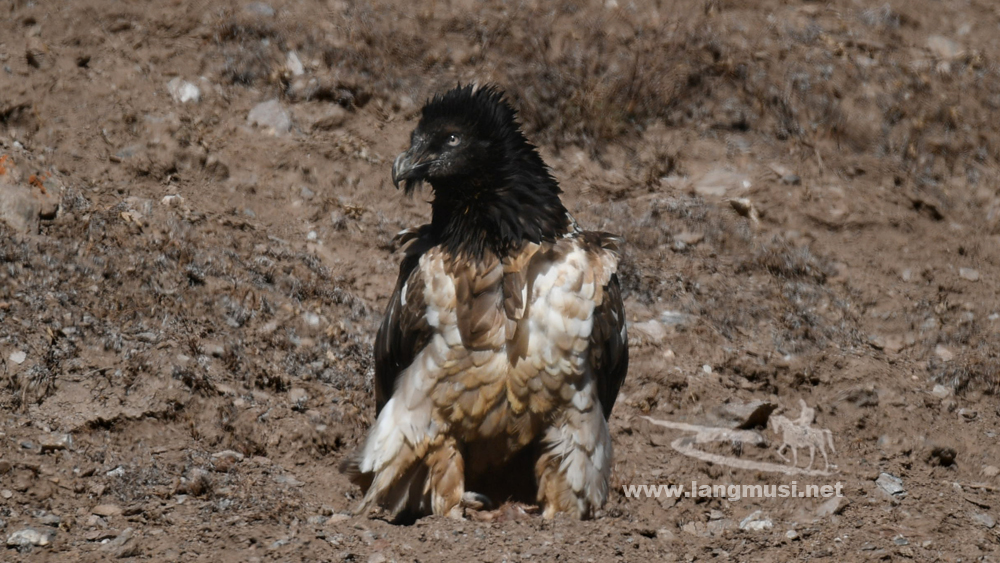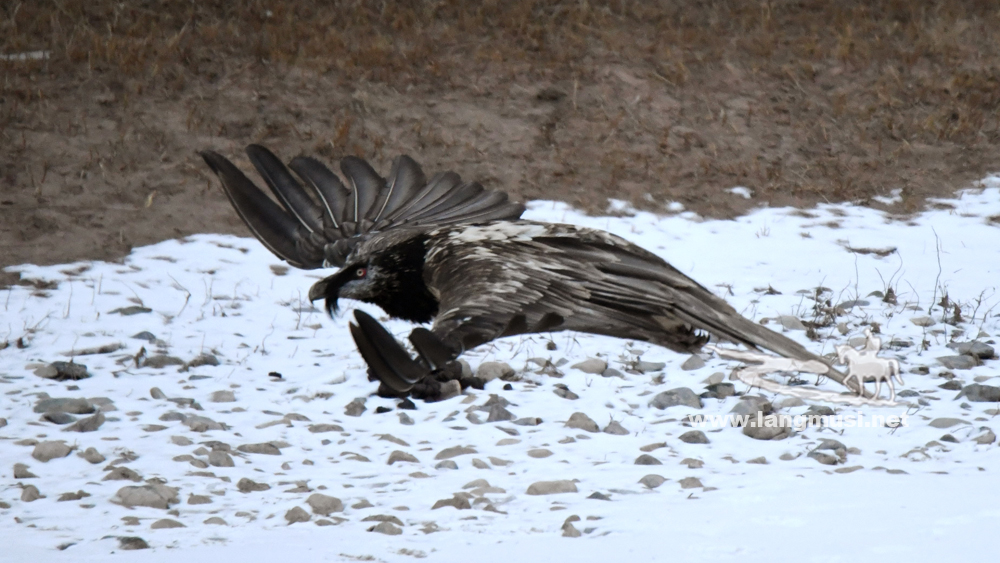As its name suggests, the steppe eagle mainly inhabits vast, semi-arid areas of grassland, known as steppe, although it also frequently occurs in semi-desert.
It is about 72–81 cm in length and has a wingspan of 1.65–2.15 m. Females are slightly larger than males. It lays 1–3 eggs in a stick nest in a tree. The steppe eagle is remarkably long lived, reaching up to 41 years in captivity.
An opportunistic predator, the steppe eagle is known for using a wide variety of hunting techniques. Typically, this species soars high above its prey, before making a steep dive and seizing the animal in its powerful talons, but it may also steal prey from other raptors while in flight, or catch prey while on the ground, often by waiting outside a burrow entrance. Small mammals form the major part of this species diet.
The steppe eagle is an extremely widespread species, which makes long-distance migrations between summer breeding grounds and wintering sites. The steppe eagle breeds from Romania east through the south Russian and Central Asian steppes to Mongolia. The European and Central Asian birds winter in Africa, and the eastern birds in India.
The white-tailed eagle is a very large bird. It measures 66–94 cm in length with a 1.78–2.45 m wingspan. Females are slightly larger than males.
The adult is mainly grayish-brown except for the slightly paler head and neck, blackish flight feathers, and distinctive white tail. All bare parts are yellow in color, including both the bill and the legs. In juvenile birds, tail and bill are darker, the tail becoming white with a dark terminal band in sub-adults. Second year birds have paler bellies and third year birds are darker. It has four or five body moults before reaching adult plumage. Only a proportion of the flight feathers are moulted each year. Moults more or less continuously, although it may pause in winter if food is in short supply.
White-tailed eagles are sexually mature at five years old. They mate for life, and breed in the same territory each year. These territories continue to be used by successive generations of eagles over many decades. One or two chicks hatch each year, and are cared for by both the male and the female. The chicks remain near the nest for some time, until they have learnt to fly and to hunt for themselves.
Inhabits large, open expanses of lake, coast or river valley in temperate regions and tundra zones. It prefers to be close to undisturbed cliffs or open stands of large, mature trees for nesting.
Some individuals have been found to live over 25 years, 21 years being the average.
This large eagle breeds in northern Europe and northern Asia. The largest populations of the white-tailed eagle are found in Norway and Russia, with important populations also found in south-west Greenland, Denmark, Sweden, Poland and Germany. Small numbers can be found in the rest of Europe, the Middle East, China, India and Mongolia.
The white-tailed eagle's diet is varied, opportunistic and seasonal. Prey specimens can often include fish, birds and mammals. Many birds live largely as scavengers, regularly pirating food from otters and other birds including cormorants, gulls, ospreys and various other raptors. Carrion is often the primary food source during lean winter months, with fish and ungulates preferred but everything from cetaceans to livestock to even humans being eaten after death.
Although generally a less active hunter than the golden eagle, competition over food can go either way depending on the individual eagle. They can exist at higher population densities and typically outnumber golden eagles because of their longer gut and more efficient digestive system, being able to live better with less food.
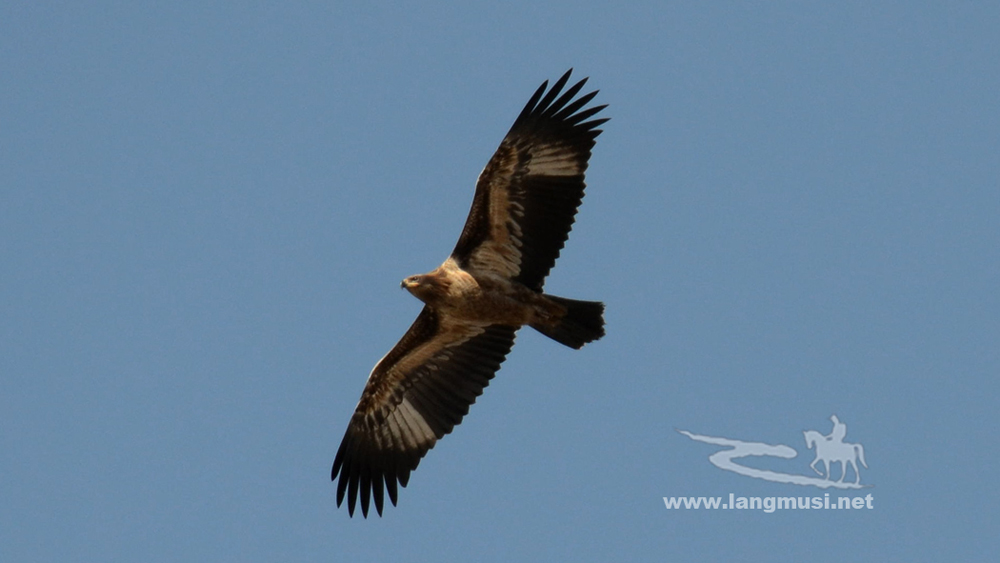
Pallas's fish eagle is a large, brownish sea-eagle. It breeds in Central Asia, between the Caspian Sea and the Yellow Sea, from Kazakhstan and Mongolia to the Himalayas, Bangladesh and northern India.
Its diet consists primarily of large freshwater fish. They also regularly predate water birds, including adult greylag geese, by assaulting them on the surface of the water and then flying off with the kill. Since that goose species is slightly heavier than the eagle, this is one of the greatest weight-lifting feats ever recorded for a flying bird.
The breeding season also varies geographically, beginning in March in the north of the range, but in early November in the south. Nests are built by both the male and female of a monogamous pair at the highest point of trees that stand on the banks of rivers or close to lakes. In Mongolia and southern Kazakhstan, nests may also be built on the ground next to lakes. Constructed over the course of a month, the nest consists of a huge platform of sticks lined with hay, rushes, straw, fine twigs and green leaves. One to three eggs are laid, hatching 40 to 45 days later, each a couple of days apart. Invariably, the last chick to hatch will die, as it cannot compete effectively with its older siblings for food from its parents. Both the male and female care for the chicks, bringing food to the nest and defending them from predators. Once fledged, the young will remain in the vicinity of the nest until they are skilled at flying.
Whilst this species is known to be migratory, its movements are not understood. Individuals from regions with climatic extremes, where lakes and rivers may freeze over during winter, are more likely to migrate south in the non-breeding season. Some individuals from a given area might be residents, while others from the same region are migratory, leading to confusion over the purpose of the migrations and the cues that trigger them. It is partially migratory, with central Asian birds wintering among the southern Asian birds in northern India, and also further west to the Persian Gulf. The main breeding areas are thought to be in China, Mongolia and the Indian subcontinent.
The conservation status of Pallas's fish eagle is Vulnerable, with a population of about 2,500 to 10,000 remaining. Pallas's fish eagle is rare and isolated throughout its territory and may not breed in large areas of it.
These birds are dark brown, with lighter golden-brown plumage on their napes. Immature eagles of this species typically have white on the tail and often have white markings on the wings. Golden eagles use their agility and speed combined with powerful feet and massive, sharp talons to snatch up a variety of prey (mainly hares, rabbits, marmots and other ground squirrels).
Golden eagles maintain home ranges or territories that may be as large as 200 km2. They build large nests in high places (mainly cliffs) to which they may return for several breeding years. Most breeding activities take place in the spring; they are monogamous and may remain together for several years or possibly for life. Females lay up to four eggs, and then incubate them for six weeks. Typically, one or two young survive to fledge in about three months. These juvenile golden eagles usually attain full independence in the fall, after which they wander widely until establishing a territory for themselves in four to five years.
Golden eagles hunt in a range of ways; they may soar and search for prey from on high, or sit in a tree on the look-out. They have also been seen flying low and then ambushing their prey. Golden eagles are sometimes considered the most superlative fliers among eagles and perhaps among all raptorial birds. They are equipped with broad, long wings with somewhat finger-like indentations on the tips of the wing. A typical, unhurried soaring speed in golden eagles is around 45–52 kilometers per hour. When hunting or displaying, the golden eagle is capable of very fast gliding, attaining speeds of up to 190 km/h. In a full stoop, a golden eagle can reach spectacular speeds of up to 240 to 320 kilometers per hour when diving after prey.
Golden eagles may live for as long as 32 years.
Despite the dramatic ways in which they attain food and interact with raptors of their own and other species, the daily life of golden eagles is often rather uneventful. In Idaho, adult male golden eagles were observed to sit awake on a perch for an average of 78% of daylight, whereas adult females sat on nest or perched for an average of 85% of the day.
The golden eagle's spreads through the Palaearctic region including mountainous parts of Europe as far south as northern Africa and south-east Asia. It also occurs in North America. Most populations of golden eagles are sedentary, but the species is actually a partial migrant. Golden eagles are very hardy species, being well adapted to cold climates, however they cannot abide declining available food sources in the northern stretches of their range. Eagles raised at latitudes greater than 60° N are usually migratory, though a short migration may be untaken by those who breed or hatch at about 50° N.
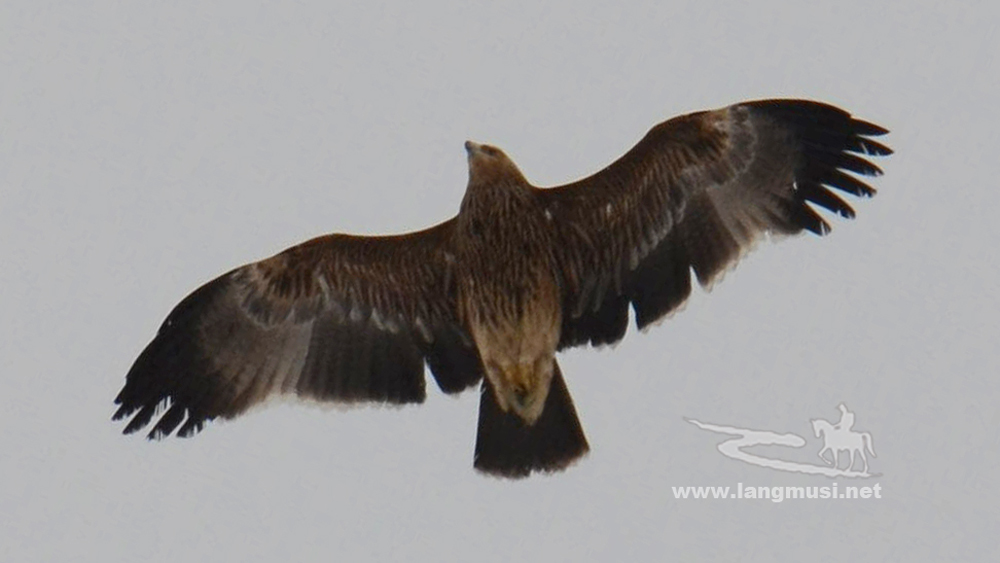
The imperial eagle is a large eagle with a length of 72–90 cm, a wingspan of 1.8–2.16 m and a weight of 2.45–4.55 kilograms. Females are about a quarter larger than males.
It feeds mainly on hares, hamsters and pheasants as well as a variety of other birds and mammals. Male and female imperial eagles form pairs at around 4 years of age, and remain in this monogamous pair for life.
Imperial eagles generally prefer to construct a nest in a tree which is not surrounded by other trees, so that the nest is visible from a considerable distance, and so that the occupants may observe the surroundings unobstructed. Tree branches are taken in order to build the nest, which is upholstered with grass and feathers. Very rarely it nests on cliffs or the ground.
In March or April the female lays two to three eggs. The chicks hatch after about 43 days and leave the nest after 60–77 days. Often, however, only one will survive to leave the nest, with the others dying before becoming fully fledged. In at least a part of its range, more than a third of all nesting attempts are entirely unsuccessful.
The imperial eagle is found from southern Europe to southern Russia, as well as northwest India and central Siberia. In winter it migrates to the Middle East, east Africa as far south as Tanzania, the Arabian Peninsula, the Indian subcontinent and south and east Asia.
This is the largest buzzard. The total length is 57–67 cm and wingspan is 143–161 cm. Weight is about 1350 grams on average. With both pale and dark morphs.
Pale morph has lightly marked whitish head, nape and underparts with large brown spots irregularly distributed in upper breast and abdomen. Flanks and sides of the belly dark, tail with greyish centre and dark sides, tail bands prominently dark, with heavier sub-terminal band. Tarsi is fully (or at least three-quarters) feathered brown. Dark morph bird has the upper parts, lower body and wing coverts solid dark, with the flight feather pattern similar to pale morph.
Normally found in open montane grass lands and cultivation in summer, wintering to lower altitudes. Frequently hovers. Hunts from air or ground. Breeds between April and August on crags and ledges of cliffs. Nest is made of sticks and well lined.
On the Tibetan Plateau, they mainly feed on Pika.
It is found in Bhutan, China, Hong Kong, India, Pakistan, Iran, Japan, Kazakhstan, North Korea, South Korea, Mongolia, Nepal, Russia, Tajikistan, and Uzbekistan.
One of the most common raptor species in Europe. While the common buzzard’s plumage is usually brown, the exact colouration and patterning is highly variable, with shades such as blackish-brown, reddish-brown and pale whitish-brown all potentially exhibited.
A mostly solitary species, the common buzzard is frequently encountered perched on a tree or post, or hovering in mid-air, scanning open ground for prey. Small mammals are most commonly taken, including voles, mice, rats, moles, young rabbits and hares. When spotted, the common buzzard makes a swift dive on half-closed wings and snatches its prey in its powerful talons. This species will also prey opportunistically on birds, reptiles, invertebrates and carrion.
Between March and May, the breeding pairs construct a nest in a large tree on a fork or branch. The nest comprises a bulky platform of sticks, lined with greenery, in which the female lays a clutch of between two to four eggs. Following an incubation period of around 33 to 38 days, the chicks hatch and are brooded by the female for three weeks, while the male supplies food. Fledging occurs around 50 to 60 days after hatching, but the young continue to be fed by both parents for a further six to eight weeks. Sexual maturity is reached at three years old, and the lifespan has been known to reach 25 years.
During migration, the common buzzard may form flocks, which utilise thermals to glide for long distances with minimal effort. When crossing large bodies of water, such as the Gibraltar straits, where thermals are absent, this species climbs as high as possible before gliding over the entire expanse.
The common buzzard has an extremely large range, with breeding populations located on the Atlantic Islands of Cape Verde, the Azores, Canaries and Madeira, east through most of Europe, northern and central Asia, as far as Japan . Populations in Britain, southern Europe, Turkey, the Caucasus, Japan, and on the smaller islands are resident throughout the year. Populations from other parts of the common buzzard’s range are either partially or completely migratory, with those breeding in the northernmost regions making extremely long, southward journeys to overwinter in Africa, Israel, the Arabian Peninsula, India, China and Indochina.
The black-eared kite has dark brown plumage and a light-colored band of feathers just before their dark wingtips. Males grow up to 58 cm long; females 68 cm. Their angled wing and distinctive forked tail make them easy to identify.
They are opportunists. In other words, they eat pretty much anything they come across, even catching insects in flight. They will also hunt and kill small mammals, such as pika; reptiles, such as lizards; and other birds, including young chickens on farms. Sometimes they also eat fish. But much of their diet is made up of carrion. Kites scavenge near human settlements and rubbish tips. In winter, many kites will roost together.
Black-eared Kite is mainly migratory in central and east Asia, south to the Himalayas and north Indochina, wintering in South Asia and regularly observed on migration each October moving north to south in Thailand as well as east to west in Nepal.
It is a widespread species that inhabits many of the temperate parts of the Northern Hemisphere. It is mainly resident, but birds from colder regions migrate south for the winter.
As typical of the genus Accipiter, the northern goshawk has relatively short wings and a long tail which make it ideally adapted to engaging in brief but agile and twisting hunting flights through dense vegetation of wooded environments. This species is a powerful hunter, taking birds and mammals in a variety of woodland habitats, often utilizing a combination of speed and obstructing cover to ambush their victims.
Common kestrels measure 32–39 cm from head to tail, with a wingspan of 65–82 cm. Females are noticeably larger.
In the cool-temperate parts of its range, the common kestrel migrates south in winter; otherwise it is sedentary, though juveniles may wander around in search for a good place to settle down as they become mature. It is a diurnal animal of the lowlands and prefers open habitat such as fields, heaths, shrubland and marshland. It does not require woodland to be present as long as there are alternative perching and nesting sites like rocks or buildings. It will thrive in treeless steppe where there are abundant herbaceous plants and shrubs to support a population of prey animals. The common kestrel readily adapts to human settlement, as long as sufficient swathes of vegetation are available, and may even be found in wetlands, moorlands and arid savanna. It is found from the sea to the lower mountain ranges, reaching up to 4,500 m ASL in the hottest tropical parts of its range but only to about 1,750 m in the subtropical climate of the Himalayan foothills.
This species occurs over a large range. It is widespread in Europe, Asia, and Africa, as well as occasionally reaching the east coast of North America.
The saker falcon can be both highly agile and extremely fast as it hunts close to the ground, capable of diving for prey at 200 miles per hour . Prey consists largely of mid-sized mammals such as ground squirrels, voles, gerbils, jerboas, stoats and hares. At other times, and particularly near water, ground-dwelling and aerial birds such as pheasants, oriental honey-buzzards, quail, ducks, owls, thrushes, larks and songbirds form a significant proportion of the diet. The saker falcon is a ferocious hunter and frequently attacks prey larger than itself.
The saker falcon prefers open terrain for hunting, such as forest steppe, desert steppe and arid montane areas. Nesting usually occurs in old abandoned nests of other birds situated on the ground, on cliffs, rocks, sandy precipices or trees, as well as on artificial structures such as poles, pylons and abandoned buildings.
The saker falcon is a wide-ranging species with a breeding distribution across the Palaearctic region from Eastern Europe to western China. After the breeding season, many populations migrate further south and spend winter in China, India, the Mediterranean, Middle East, and parts of Africa.
BirdLife International categorises this bird as endangered, due to a rapid population decline, particularly on the central Asian breeding grounds.
This falcon is 29–36 cm in length with a wingspan of 74–84 cm and a weight of 175–285 g.
This species breeds across Africa, Europe and Asia. It is a long-distance migrant, wintering in Africa and Asia. It is a bird of open country such as farmland, marshes, taiga and savannah.
It is an elegant bird of prey, appearing sickle-like in flight with its long pointed wings and square tail, often resembling a swift when gliding with folded wings. It is fast and powerful in flight and will take large insects, such as dragonflies, which it transfers from talons to beak and eats while soaring slowly in circles. It also captures small bats and small birds in flight. Its speed and aerobatic skills enable it to take swallows and even swifts on the wing.
The hen harrier is 41–52 cm long with a 97–122 cm wingspan. It resembles other harriers in having distinct male and female plumages.
This medium-sized raptor breeds on moorland, bogs, prairies, farmland coastal prairies, marshes, grasslands, swamps and other assorted open areas.
These are the only hawk-like birds known to practice polygyny – one male mates with several females. Up to five females have been known to mate with one male in a season. The nest is built on the ground or on a mound of dirt or vegetation. Four to eight (exceptionally 2 to 10) whitish eggs are laid.
Hen Harriers hunt primarily small mammals, as do most harriers. Preferred prey species can include voles, cotton rats and ground squirrels. Up to 95% of the diet comprises small mammals. However, birds are hunted with some regularity as well, especially by males. Preferred avian prey include passerines of open country (i.e. sparrows, larks, pipits), small shorebirds and the young of waterfowl and galliforms. Supplementing the diet occasionally are amphibians (especially frogs), reptiles and insects (especially orthopterans). The species has been observed to hunt bats if these are available. Larger prey, such as rabbits and adult ducks are taken sometimes and harriers have been known to subdue these by drowning them in water. Harriers hunt by surprising prey while flying low to the ground in open areas, as they drift low over fields and moors. The harriers circle an area several times listening and looking for prey. Harriers use hearing regularly to find prey, as they have exceptionally good hearing for diurnal raptors, this being the function of their owl-like facial disc. This harrier tends to be a very vocal bird while it glides over its hunting ground.
It breeds throughout the northern parts of the northern hemisphere in Canada and the northernmost USA, and in northern Eurasia. It migrates to more southerly areas in winter. Eurasian birds move to southern Europe and southern temperate Asia, and American breeders to the southernmost USA, Mexico, and Central America. In the mildest regions, such as France, Great Britain, and the southern US, hen harriers may be present all year, but the higher ground is largely deserted in winter.
It is usually 23 centimetres in length with a wingspan of 56 centimeters for both sexes. It has a large head, long legs, and yellow eyes, and its white “eyebrows” give it a stern expression. Juveniles are duller, and lack the adult's white crown spots.
One of the most diurnal species of owl, in some parts of its range the little owl often hunts during the day. Like most owls, however, it is also commonly active between dusk and dawn, and is generally encountered perched on post, tree or telegraph wire, scanning the ground for prey. It feeds on insects, earthworms, other invertebrates and small vertebrates.
The little owl breeds between March and August, and forms monogamous pairs, which remain together for at least a year and possibly until one of the birds dies. The nest is constructed within a hollow cavity, which is scraped out and cleaned before a clutch of three to six eggs is laid within. Both incubation of the eggs, which takes between 28 and 33 days, and brooding of the chicks, which lasts for a further 14 days, are performed by the female, while the male supplies food. After brooding, both parent birds supply food for the chicks, which may begin to explore outside the nest in the surrounding vegetation. At around 30 to 35 days old the chicks become fully fledged, but continue to be provided with food for a further month. The little owl often returns to the same nesting site, with some nests in Britain being reused for over 25 years.
The little owl is a bird that inhabits much of the temperate and warmer parts of Europe, Asia east to Korea, and north Africa.
The Eurasian eagle-owl is a species of eagle-owl that resides in much of Eurasia.
It is one of the largest species of owl, and females can grow to a total length of 75 cm, with a wingspan of 188 cm, males being slightly smaller. This bird has distinctive ear tufts, with upper parts that are mottled with darker blackish colouring and tawny. The wings and tail are barred. The underparts are a variably hued buff, streaked with darker colour. The facial disc is poorly developed and the orange eyes are distinctive.
Besides being one of the largest living species of owl, it is also one of the most widely distributed. The Eurasian eagle-owl is found in many habitats but is mostly a bird of mountain regions, coniferous forests, steppes and other relatively remote places. It is a mostly nocturnal predator, hunting for a range of different prey species, predominantly small mammals but also birds of varying sizes, reptiles, amphibians, fish, large insects and other assorted invertebrates. It typically breeds on cliff ledges, in gullies, among rocks or in other concealed locations. The nest is a scrape in which averages of two eggs are laid at intervals. These hatch at different times. The female incubates the eggs and broods the young, and the male provides food for her and when they hatch, for the nestlings as well. Continuing parental care for the young is provided by both adults for about five months. There are at least a dozen subspecies of Eurasian eagle-owl.
The cinereous vulture is believed to be the largest true bird of prey in the world, attaining a maximum size of 14 kg, 1.2 m long and 3.1 m across the wings. Despite limited genetic variation in the species, body size increases from west to east, with the birds from southwest Europe (Spain and south France) averaging about 10% smaller than the vultures from central Asia (Manchuria, Mongolia and northern China).
This vulture is a bird of hilly, mountainous areas, especially favoring dry semi-open habitats such as meadows at high altitudes over much of the range. Nesting usually occurs near the tree line in the mountains. Two habitat types were found to be preferred by the species in China and Tibet. Some cinereous vultures in these areas live in mountainous forests and shrubland from 800 to 3,800 m, while the others preferred arid or semi-arid alpine meadows and grasslands at 3,800 to 4,500 m in elevation.
The cinereous vulture is a largely solitary bird, being found alone or in pairs much more frequently than most other Old World vultures.
The breeding season lasts from February until September or October. The nests of this species are usually built in trees, or often on rocks in Asia. The cinereous vulture lays a single egg between February and April, with an incubation period of 50 to 62 days. Males and females cooperate to rear their young, and the chick tends to spend more than 100 days in the nest and to stay with the adults for 2 to 3 months after fledging before it becomes independent. Many pairs of cinereous vultures do not breed every year. In captivity, this species has been known to live to an impressive 39 years old.
Like all vultures, the cinereous vulture eats mostly carrion.
The cinereous vulture has a large range across Europe and Asia, stretching from Spain to China in the breeding season and from the Middle East, across India and east to North and South Korea during the winter. Different populations of the cinereous vulture have different migratory behaviours, with the species being classed as a ‘partial migrant’.
This is a huge vulture. Adults have a ruff that is long and pale brown with white streaks. The ruff feathers are long and spiky. The head is covered in down which is yellowish in adults but whitish in immature vultures. They are similar in size to the cinereous vulture.
Himalayan vultures often bask in the sun on rocks. They soar in thermals and are not capable of sustained flapping flight. Flocks may follow grazers up the mountains in their search for dead animals.
The breeding season begins in January. The nest is a platform of sticks placed on an inaccessible ledge on a cliff. Several pairs may nest on the same cliff face, with between five and seven pairs being a typical colony size. On the Tibetan Plateau, Himalayan and bearded vultures were observed nesting in close proximity without conflict, which is notable because in several other cases of adjacent interspecies nesting by Old World vultures (including some involving bearded vultures) have resulted in high aggression and interspecies attacks. A single white egg marked with red splotches is the usual clutch. In captivity the incubation period was about 54–58 days. The young birds stay on with the parents for six to seven months.
The species is found mainly in the higher regions of the Himalayas, the Pamirs, Kazakhstan and on the Tibetan Plateau (technically in China), with northwestern limits of the breeding range being in Afghanistan and southern limits in Bhutan.
This bird is 94–125 cm long with a wingspan of 2.31–2.83 m.It weighs 4.5–7.8 kg.In Eurasia, vultures found around the Himalayas tend to be slightly larger than those from other mountain ranges. Females are slightly larger than males.
Unlike most vultures, the bearded vulture does not have a bald head. This species is relatively small headed, although its neck is powerful and thick. The creamy-coloured forehead contrasts against a black band across the eyes and lores and bristles under the chin, which form a black beard that give the species its English name. Bearded vultures are variably orange or rust of plumage on their head, breast and leg feathers. The juvenile bird is dark black-brown over most of the body, with a buff-brown breast and takes five years to reach full maturity.
It usually disdains the actual meat, however, and lives on a diet that is typically 85–90% bone marrow. This is the only living bird species that specializes in feeding on marrow. The bearded vulture can swallow whole or bite through brittle bones up to the size of a lamb's femur and its powerful digestive system quickly dissolves even large pieces. The bearded vulture has learned to crack bones too large to be swallowed by carrying them in flight to a height of 50–150 m above the ground and then dropping them onto rocks below, which smashes them into smaller pieces and exposes the nutritious marrow. This learned skill requires extensive practice by immature birds and takes up to seven years to master. More seldom, these birds have been observed to try to break bones (usually of a medium size) by hammering them with their bill directly into rocks while perched. In addition to bones and other carrion, this species does take some live prey, such as tortoises, hyraxes and hares, which receive a similar treatment to the large bones. During the breeding season they feed mainly on carrion. They prefer limbs of sheep and other small mammals and they carry the food to the nest unlike other vultures which feed their young by regurgitation. This species is almost entirely associated with mountains and inselbergs with plentiful cliffs, crags, precipices, canyons and gorges. They are often found near alpine pastures and meadows, montane grassland and heath, steep-sided, rocky wadis, high steppe and are occasional around forests. They seem to prefer desolate, lightly-populated areas where predators who provide many bones, such as wolves and golden eagles, have healthy populations. They are typically found around or above the tree line which are often near the tops of the mountains, at up to 2,000 m in Europe, 4,500 m in Africa and 5,000 m in central Asia.
Wild bearded vultures have a mean lifespan of 21.4 years, but have been observed to live for up to at least 45 years in captivity.
It lives and breeds on crags in high mountains in southern Europe, the Caucasus, Africa,the Indian subcontinent, and Tibet, laying one or two eggs in mid-winter that hatch at the beginning of spring. Populations are resident.
